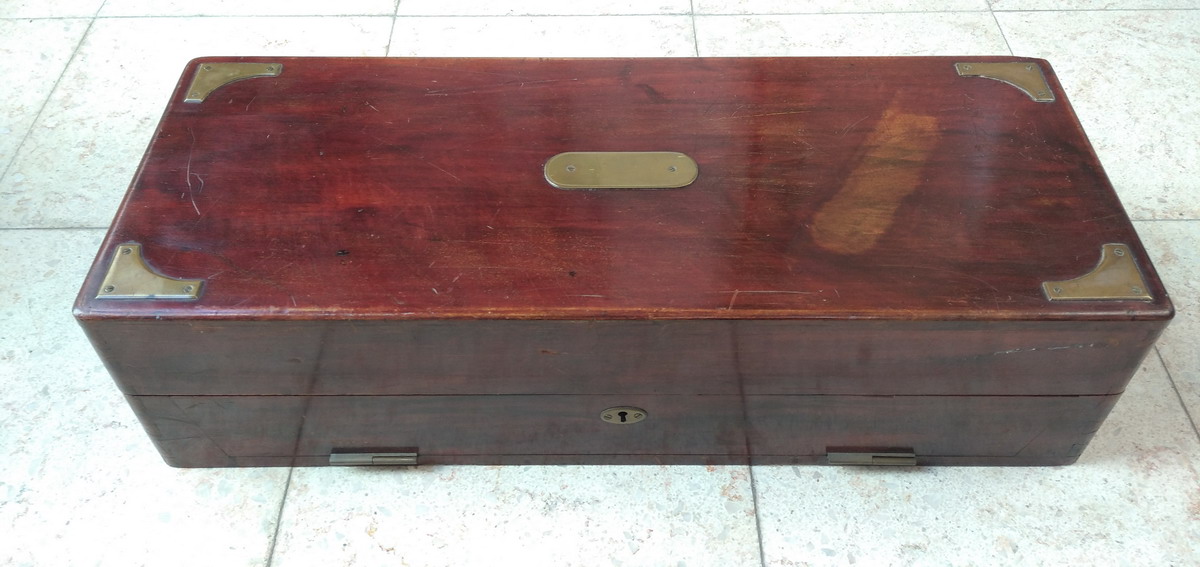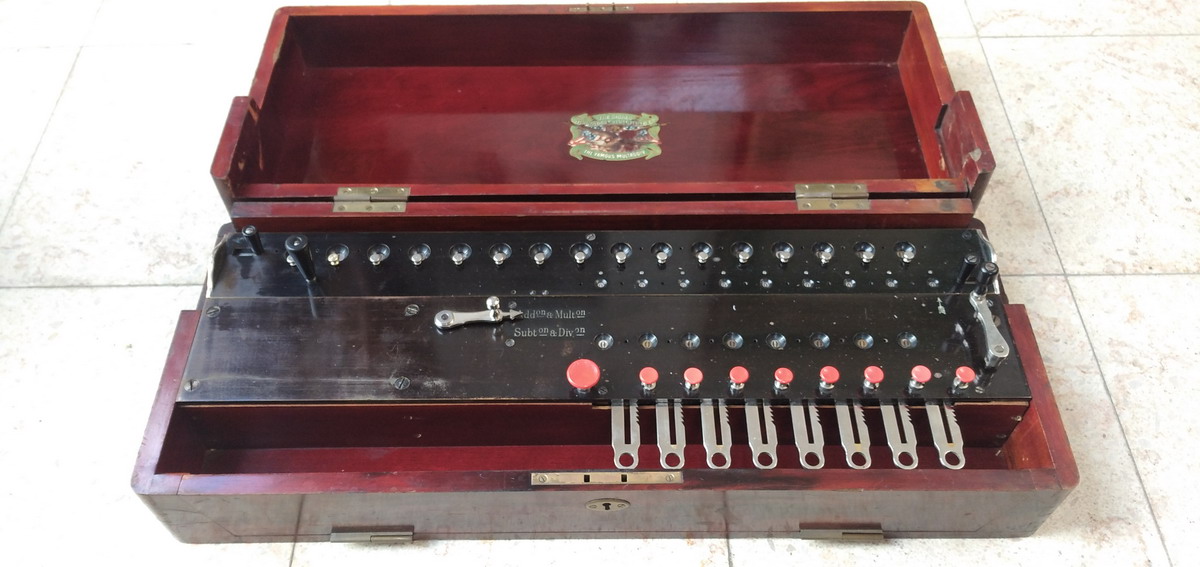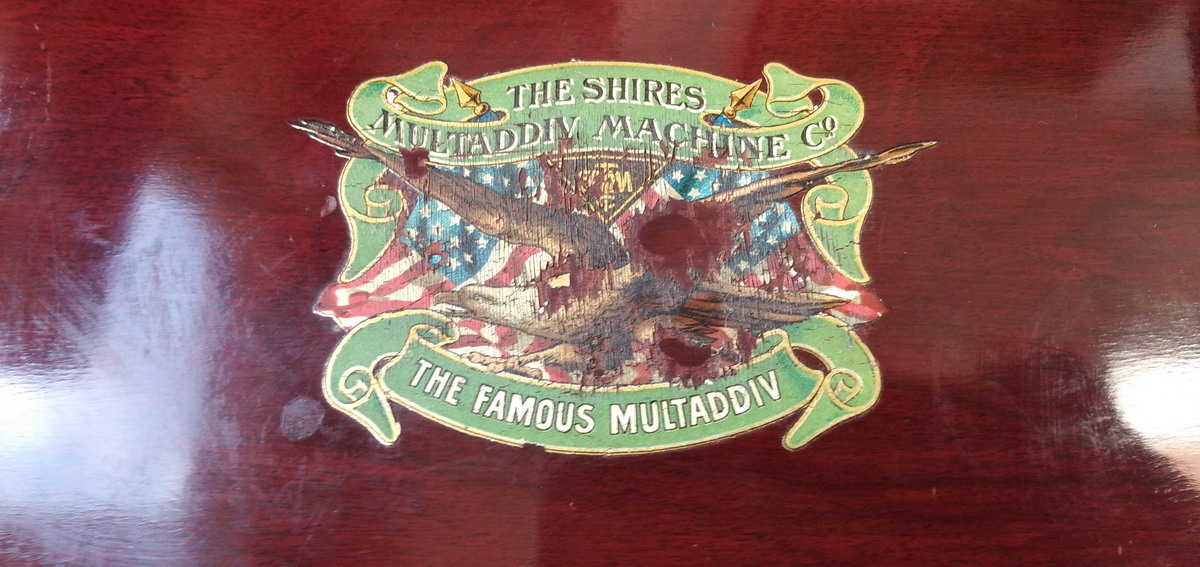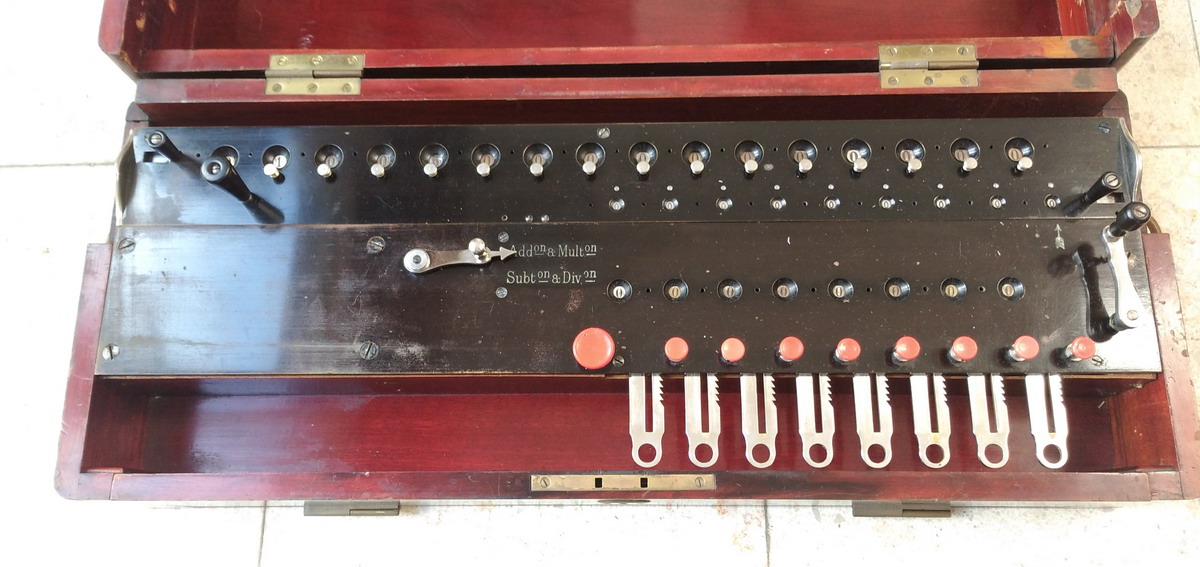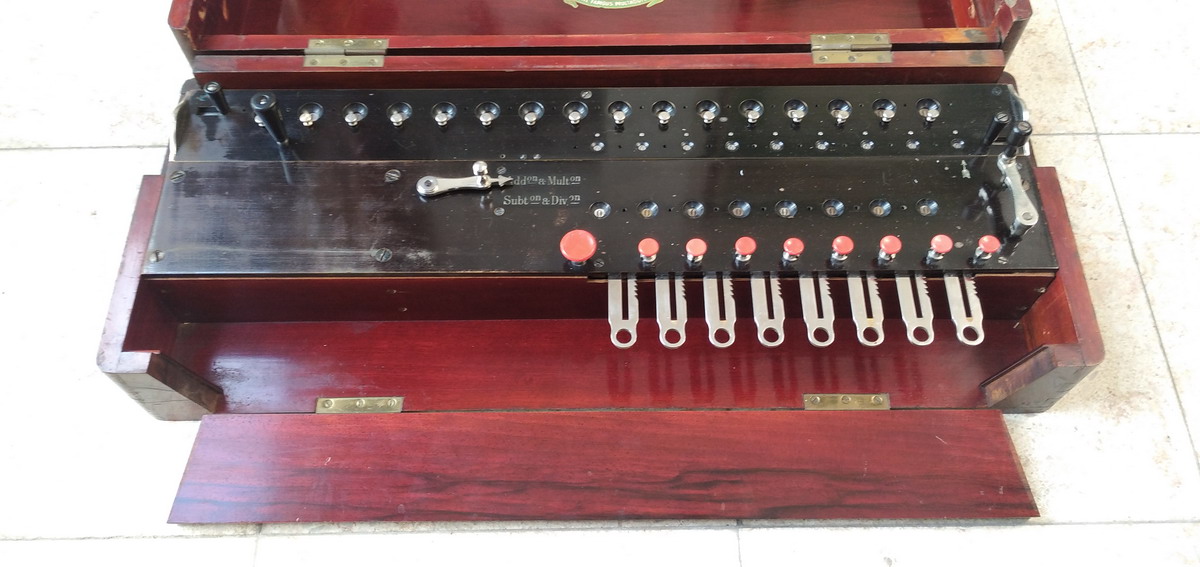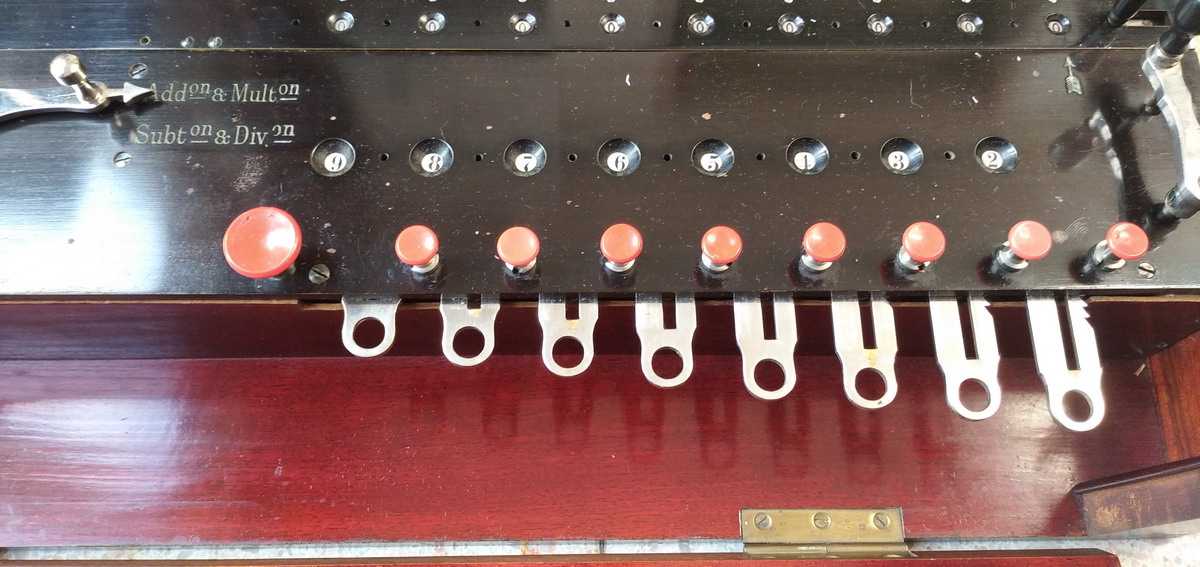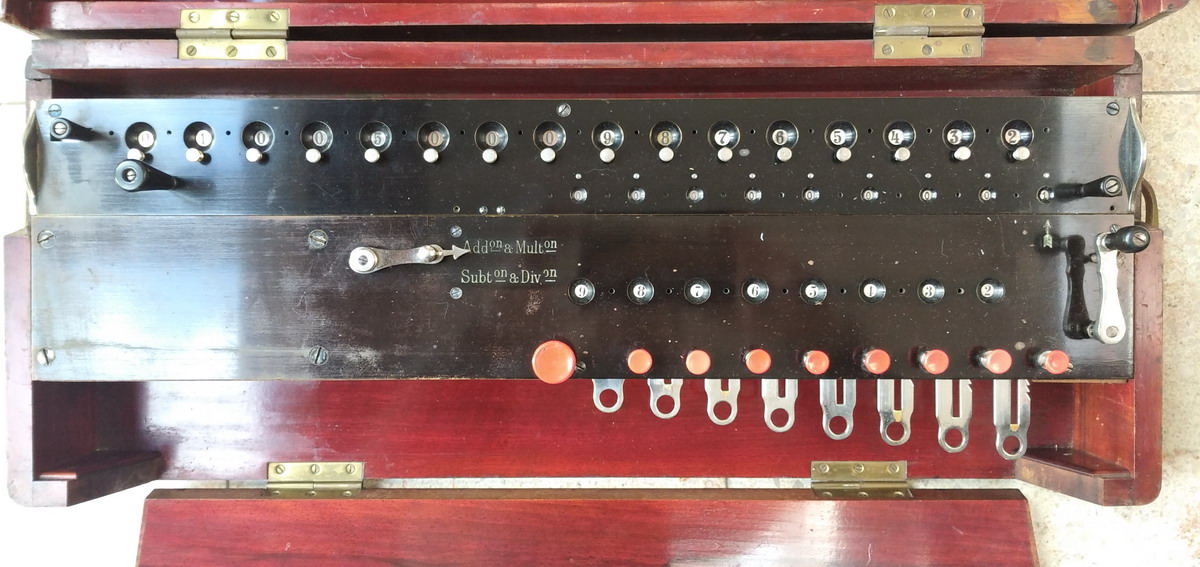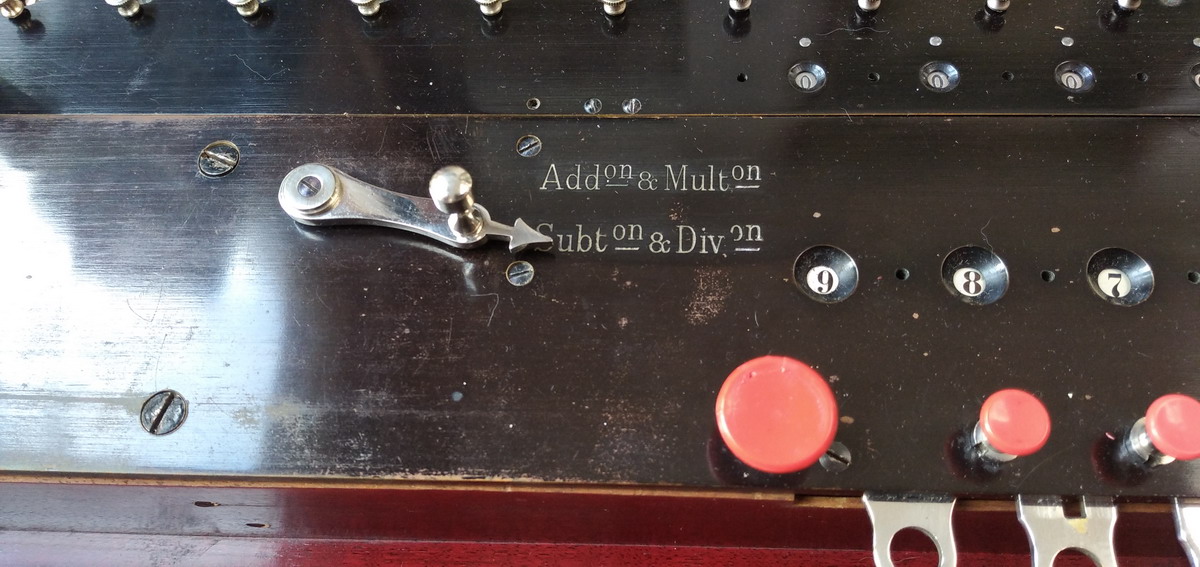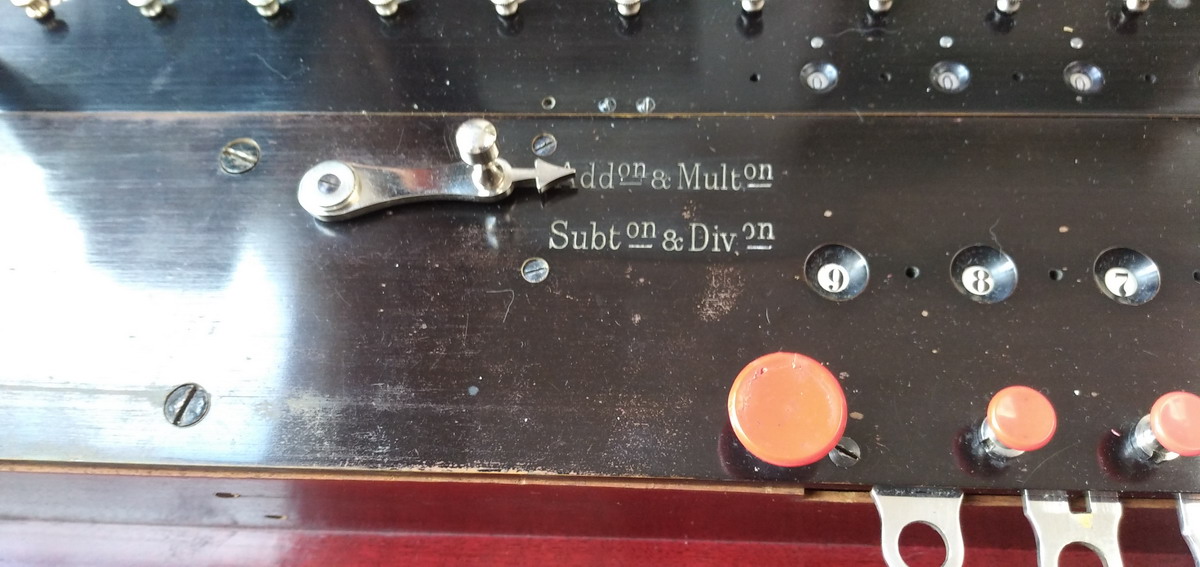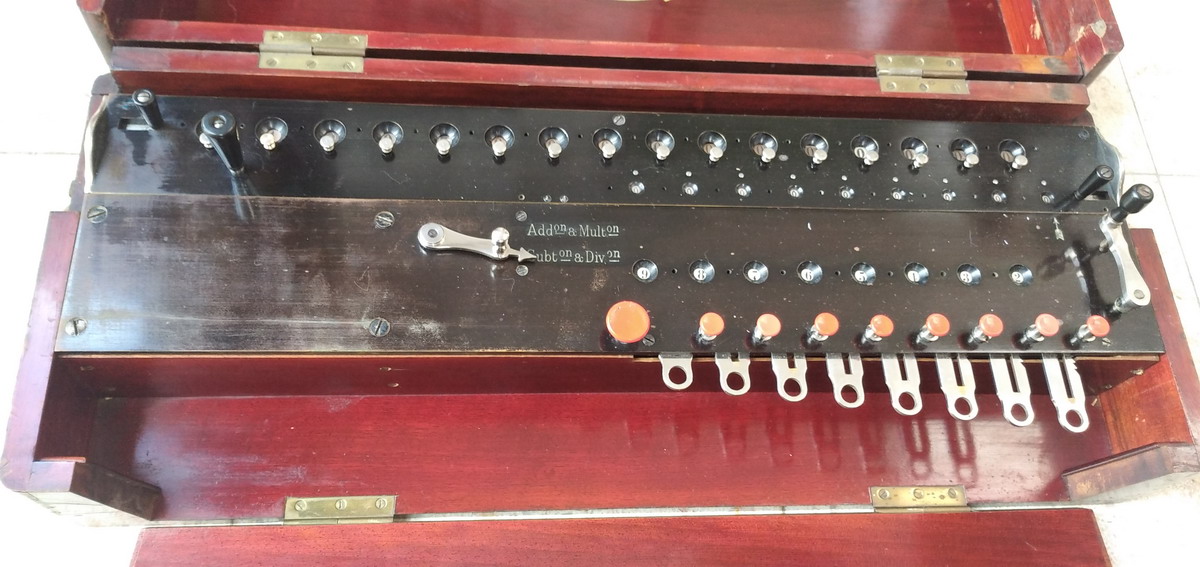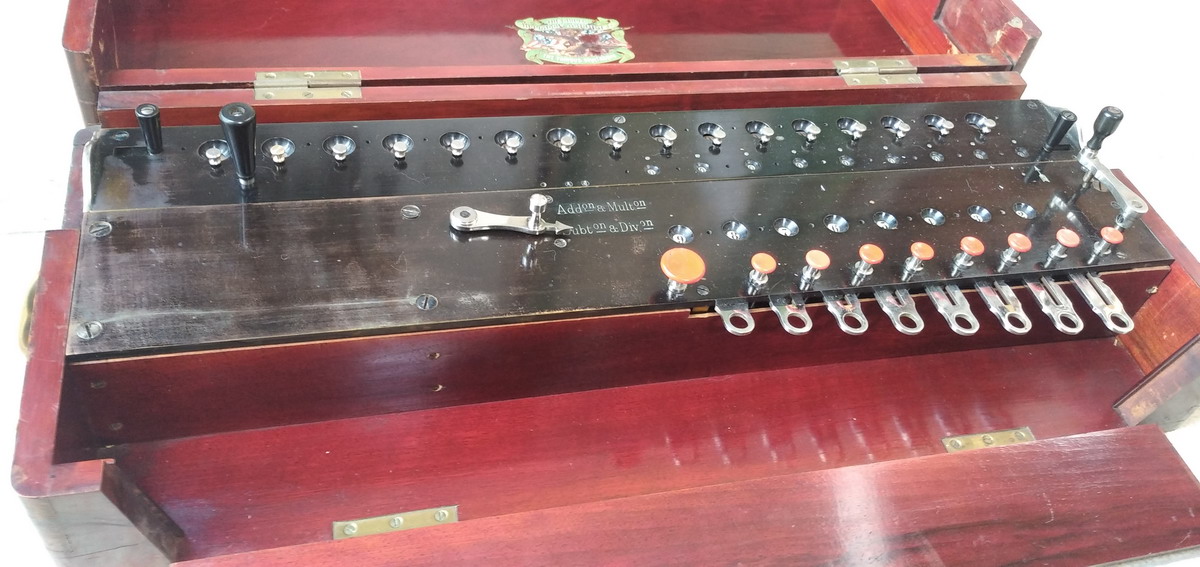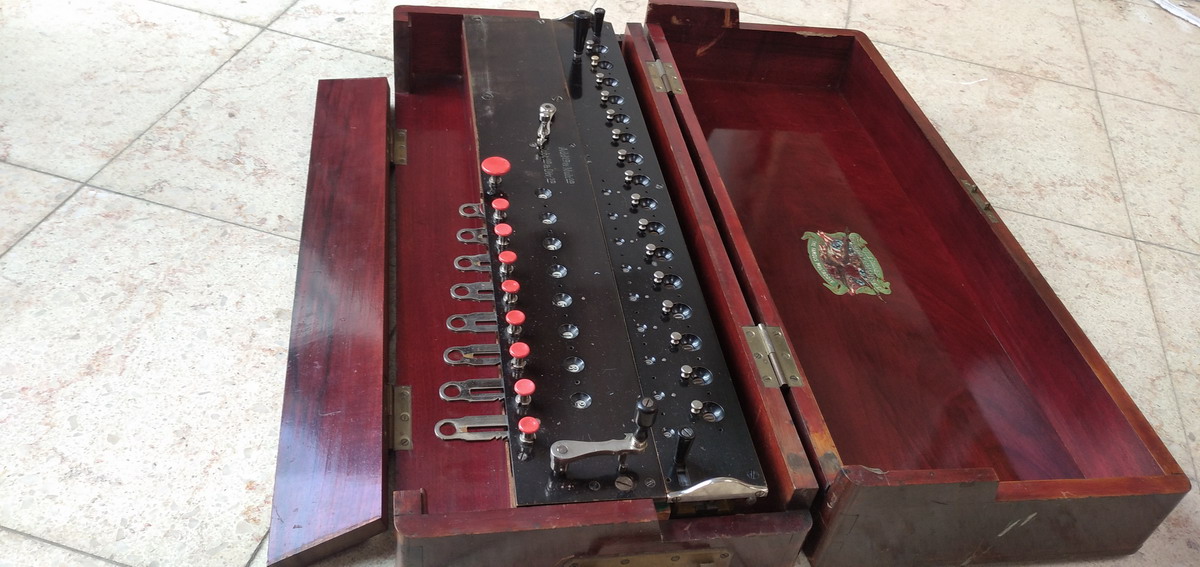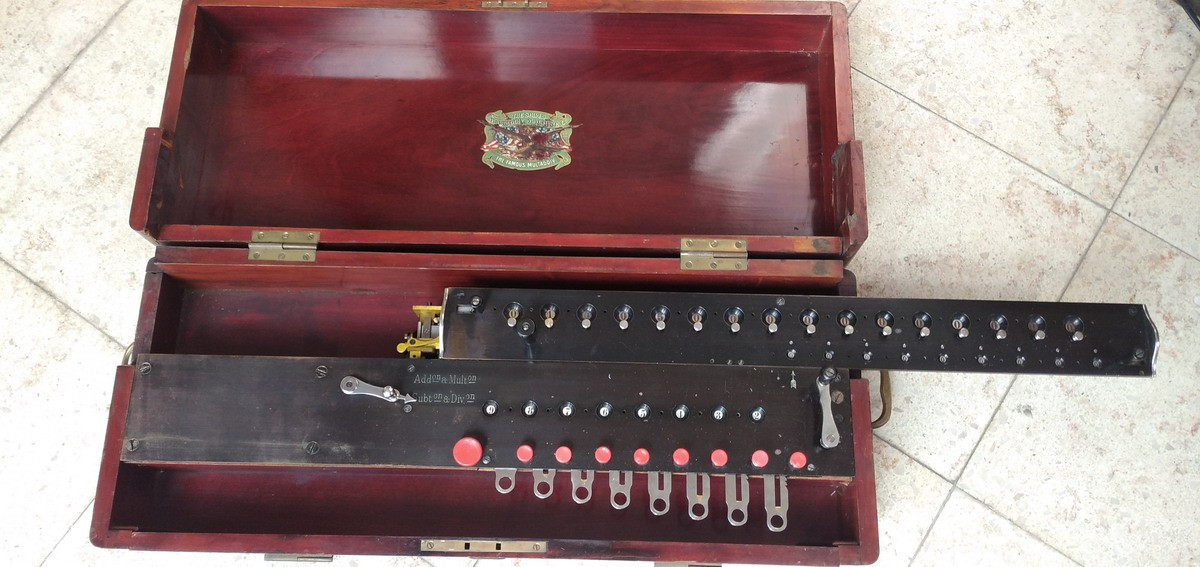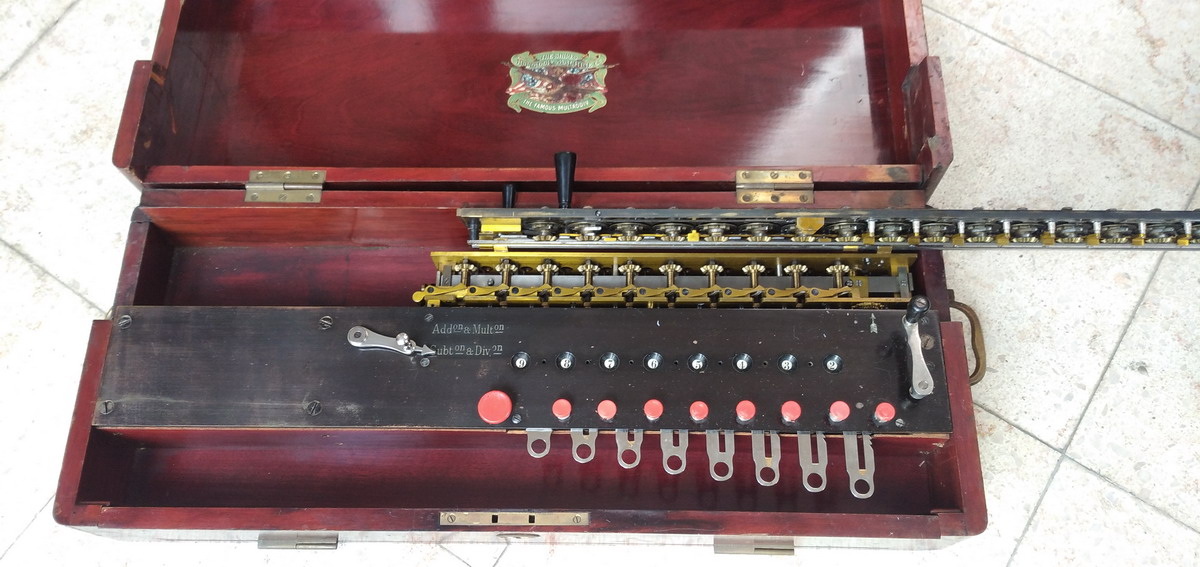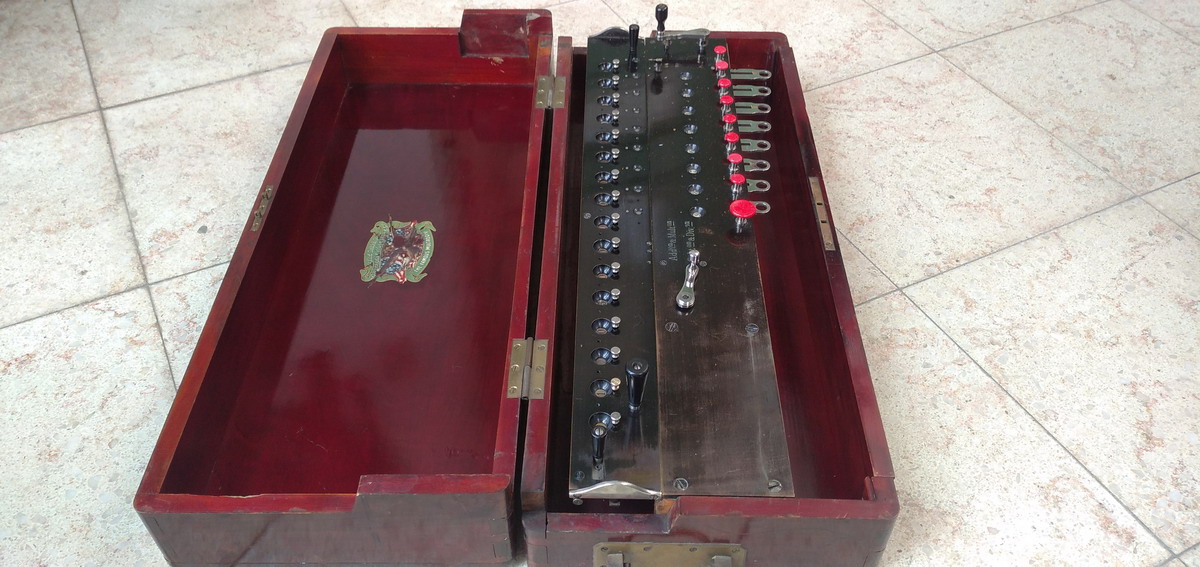Shires Multaddiv
This calculator is a bit of an enigma. Its setting system, which is rather peculiar, is replicated exactly in patent AT38723 from 1907, by Hugo Harald Wurfschmidt in Vienna. The original patent (AT35114) is essentially about a second result register, and the weird pull-out setting system, but without the automatic zeroing by pushbutton. There are mentions of the Shires Multaddiv Company found in e.g. Compass 1912, Band III, Teil 1, where there is an entry for the “Shires Multaddiv Gesellschafft” in Vienna. It was established in 1906.
All known machines so far have been found in Europe, so it is all the more mysterious why there would be an American bald eagle and American flags in the logo on the inside of the case. The machine has a very European feel to it in any case, it is a bog standard arithmometer once you take the top plate off, the only strange feature is the input system, and the +/- switch, which is a twisting pointer instead of a direct lever. Tens carry is through the antiquated system with the two springs that is used in the original 1865 model of the Thomas Arithmometer.
My distinct impression is that the machine is European in design and built in Europe. Certainly the thread on the twist knobs for the carriage is M2, which seems hard to frame in the context of the machine being American. So what the strange infatuation with America is about remains shrouded in the mists of time ... Perhaps G. Eduard Shires was American, and part-financed the company, with the hope of exporting these machines to the USA?
In any case, this example has serial number C2 346, only a few numbers away from the other known serial numbers, which are C2 352 and C2 368. Does this also mean over 300 machines were built, or did they perhaps start at n° 300, or even n° 340 ? We have absolutely no idea ... I currently know of 6 of these machines in existence, two in the collection of the Arithmeum, one in France, one in Germany, and two in Spain.
This particular machine was auctioned by Bukowski and bought by the Arithmeum, who then asked me to have a look at repairing and completing it.
The mahogany box is a work of art - it has no storage compartment, because the top plate of the machine spans the entire width of the box, but it is wider than a normal arithmometer box, because it needs space for pulling out the setting sliders. In order to do this, there is a “flap” at the front of the box, which folds down to give easy access to the setting mechanism - see below.
When the machine arrived, the box was a little worse for wear - dirty, damaged varnish on the top, the top of the box had come loose from the sides at the back, and the block of wood to which the machine was screwed had split. All of this was quickly remedied, apart from the hole in the varnish, which I left, because the only option for me would be to completely refinish the top of the box. The Arithmeum has a talented wood restorer who can probably fix the hole in the shellac in an inconspicuous manner.
The machine was basically functional, if a bit stiff, and especially very dirty. The main issue were the keytops, which had come off, and two were missing.
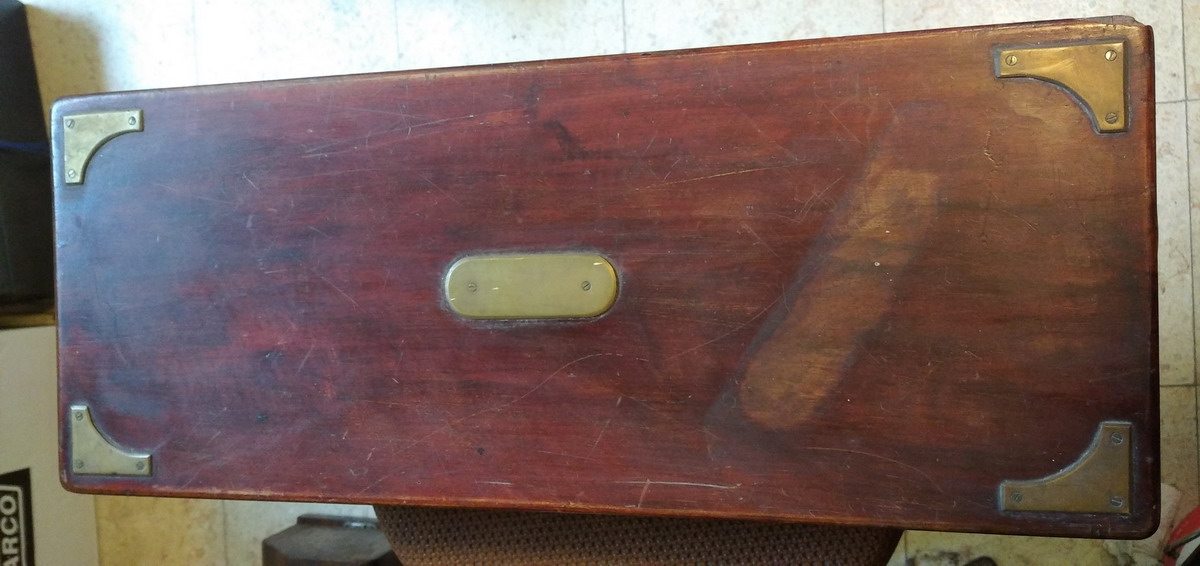
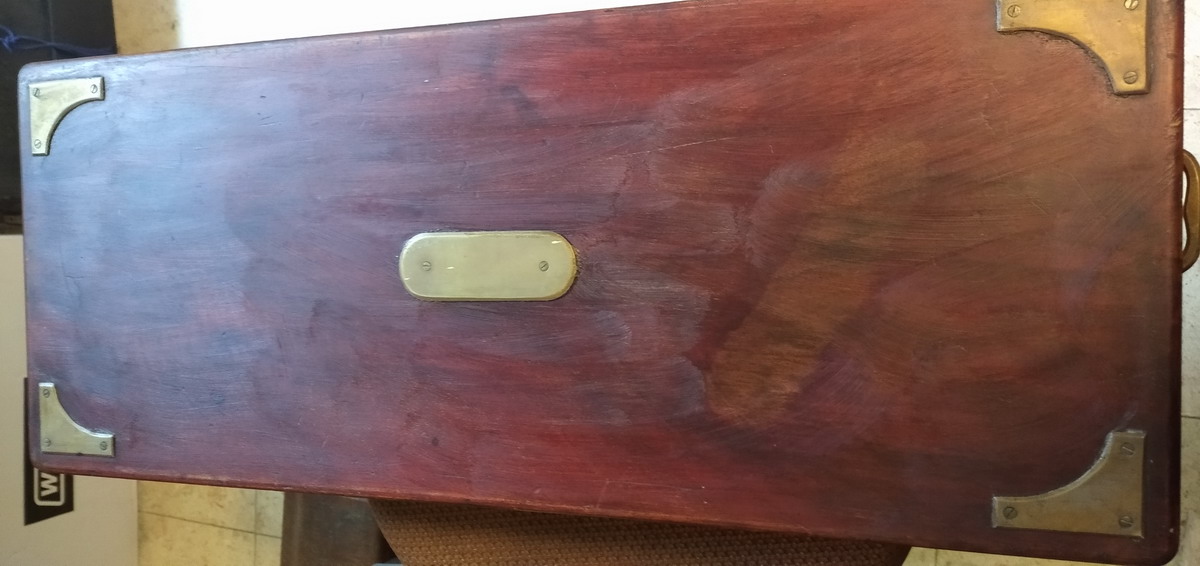
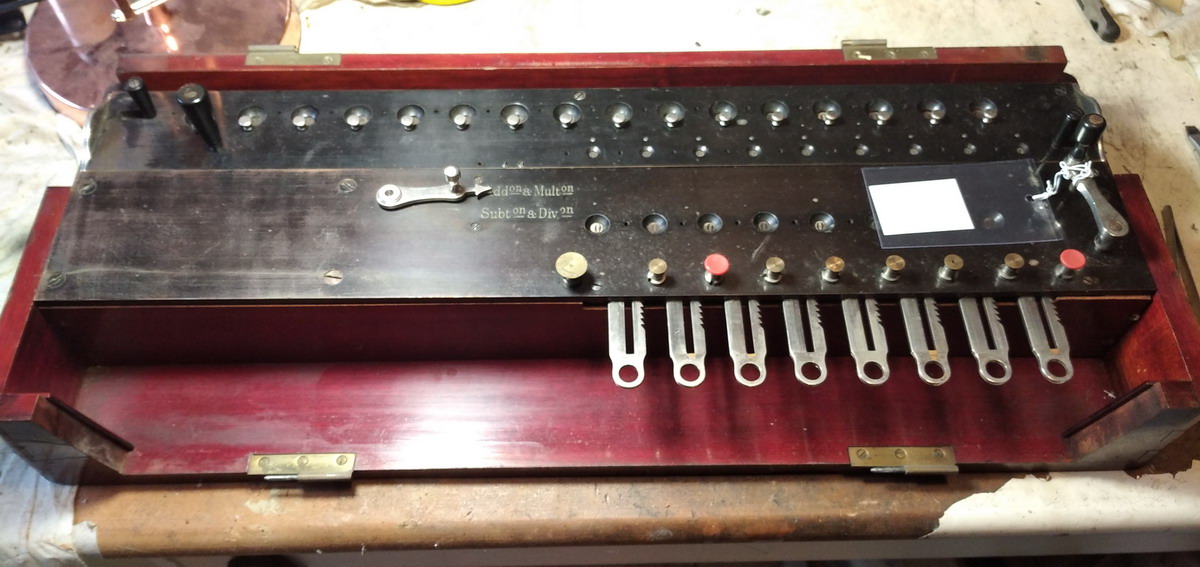
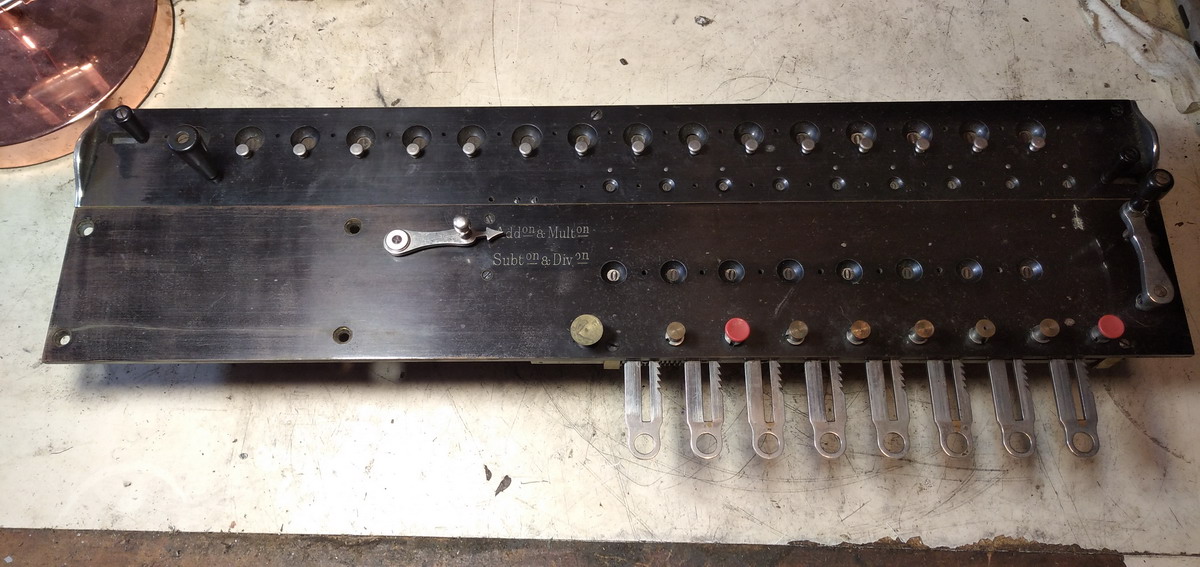
Once the machine was out of the wooden box, the input system and its clearing could be observed. The input sliders have a ratchet action with toothed rack and a rotating pawl - they can only be pulled out, not be slid back in.
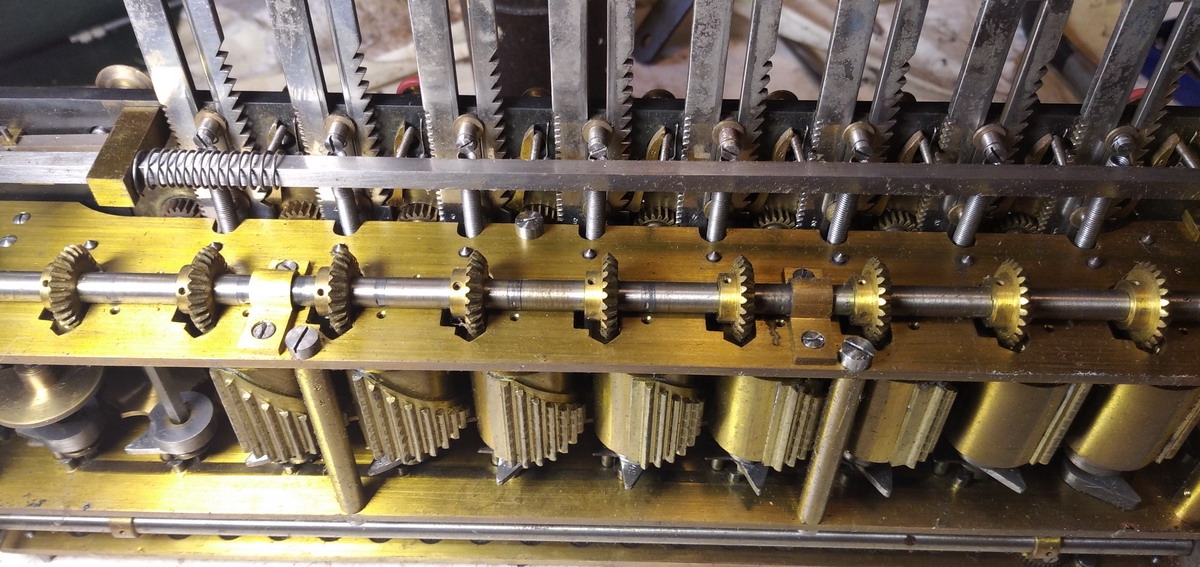
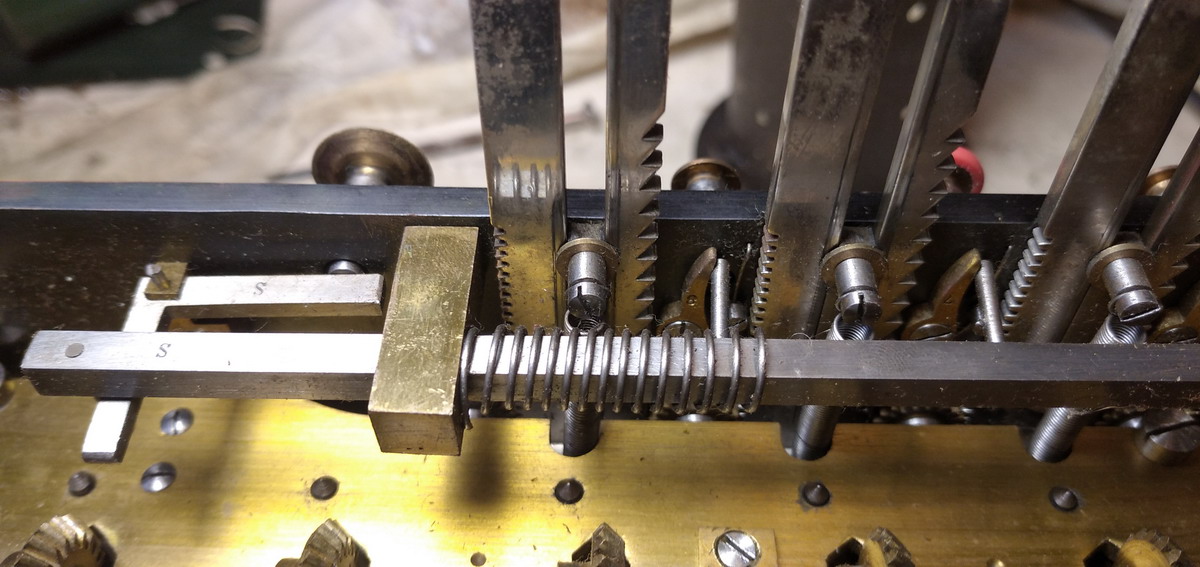
To slide them back in, the button next to the slider needs to be pushed, which has a conical end and pushes against the end of the pawl, taking it out of engagement with the rack, which then slides back under spring pressure.
The large button operates a slider bar, with takes all the pawls out of engagement at the same time.
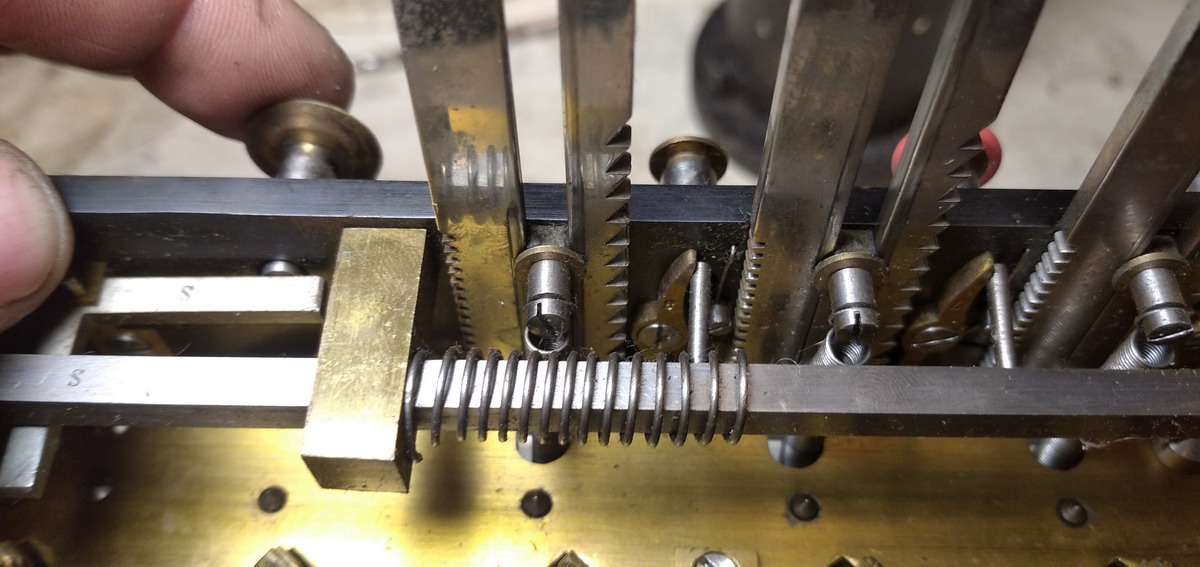
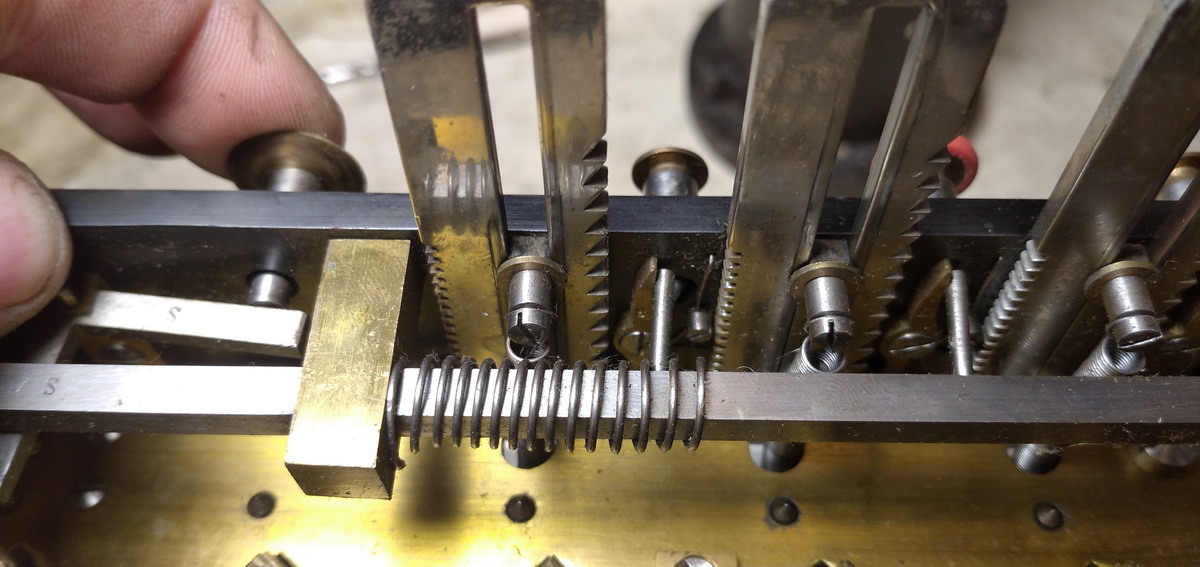
The setting mechanism itself can be seen much easier with the top plate off the machine, like so:
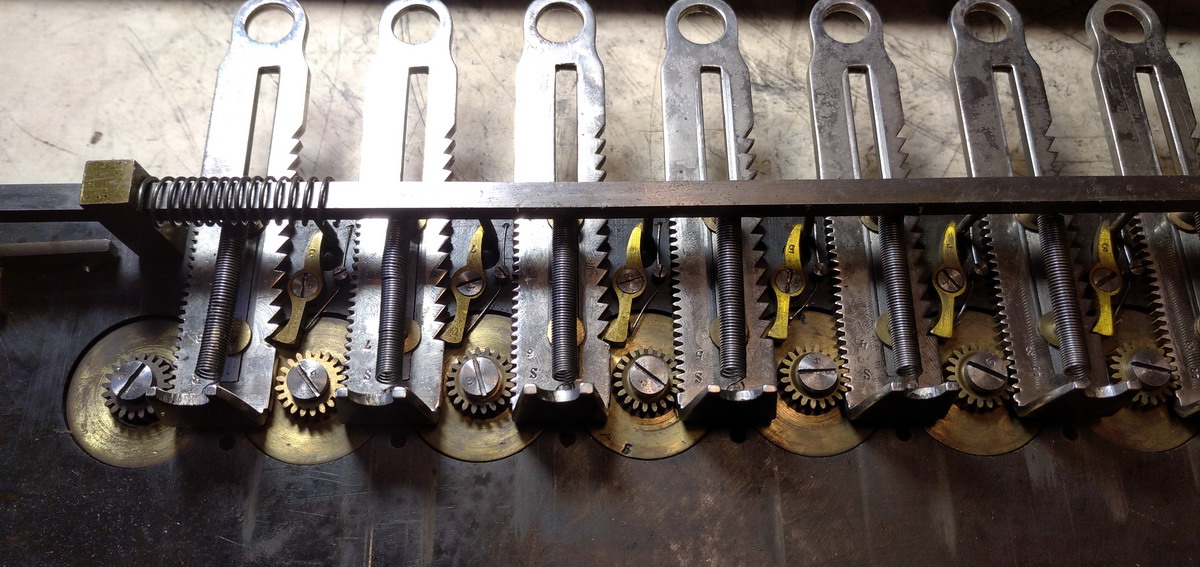
The various setting sliders were taken off in pairs and the rotating indicator as well as the rest of the slider mechanism cleaned.
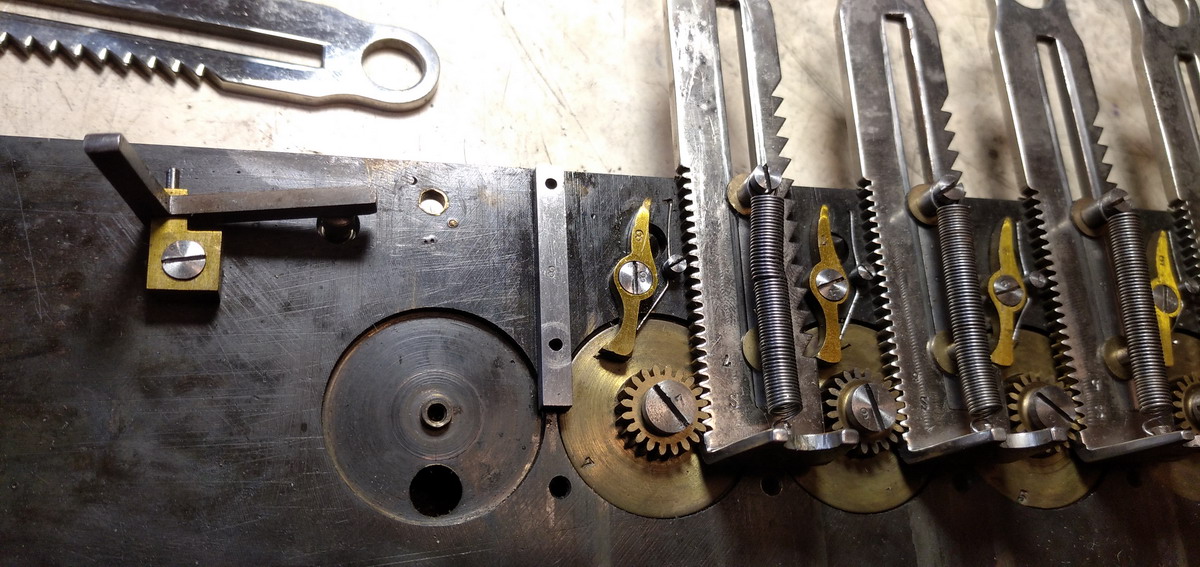
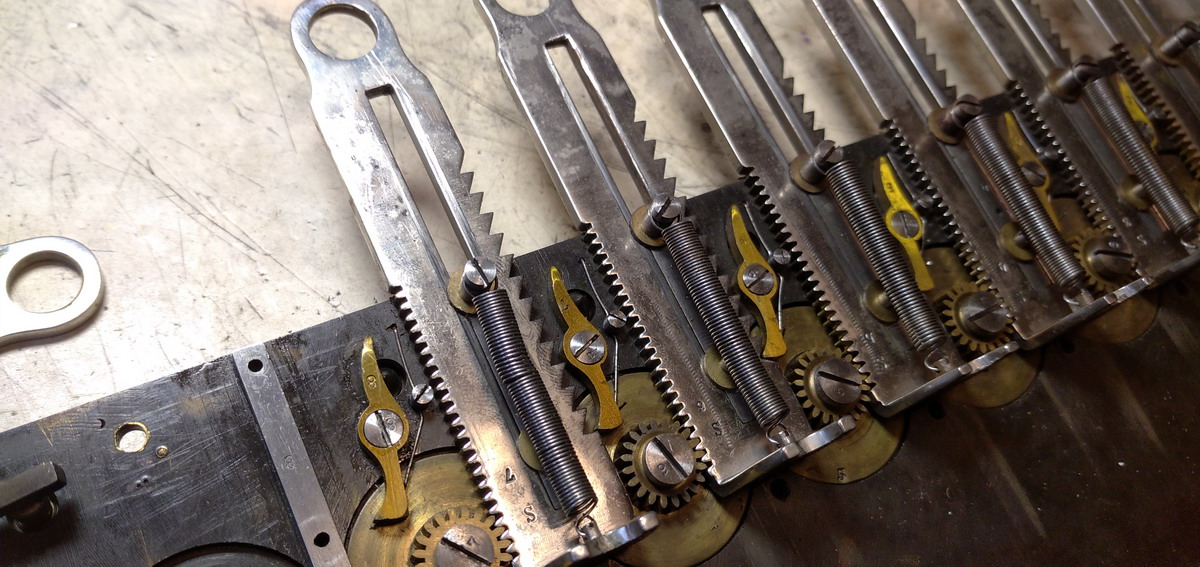
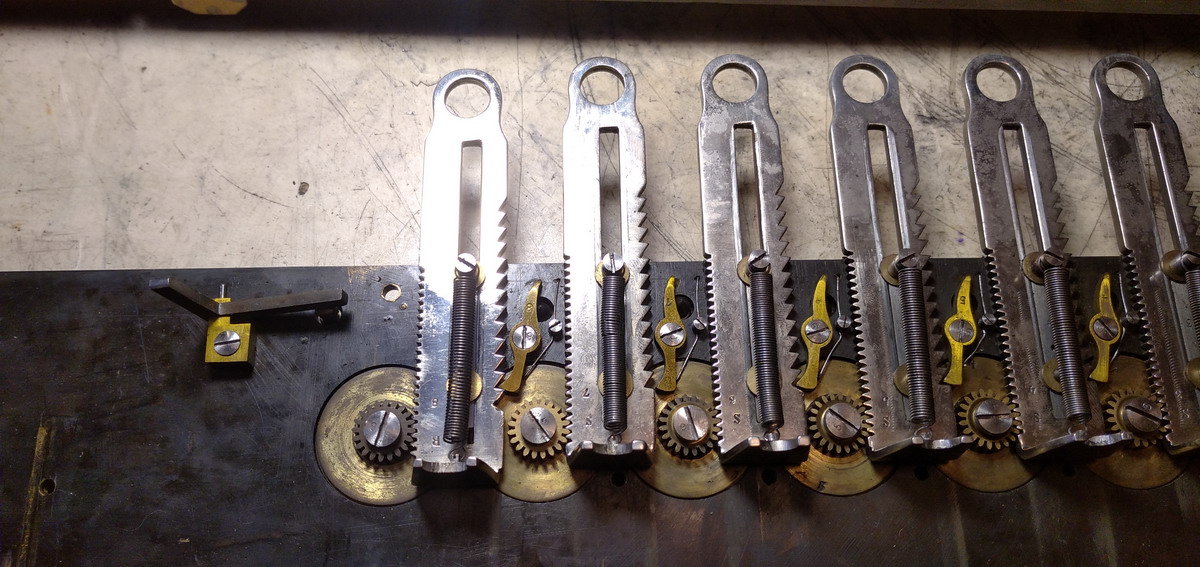
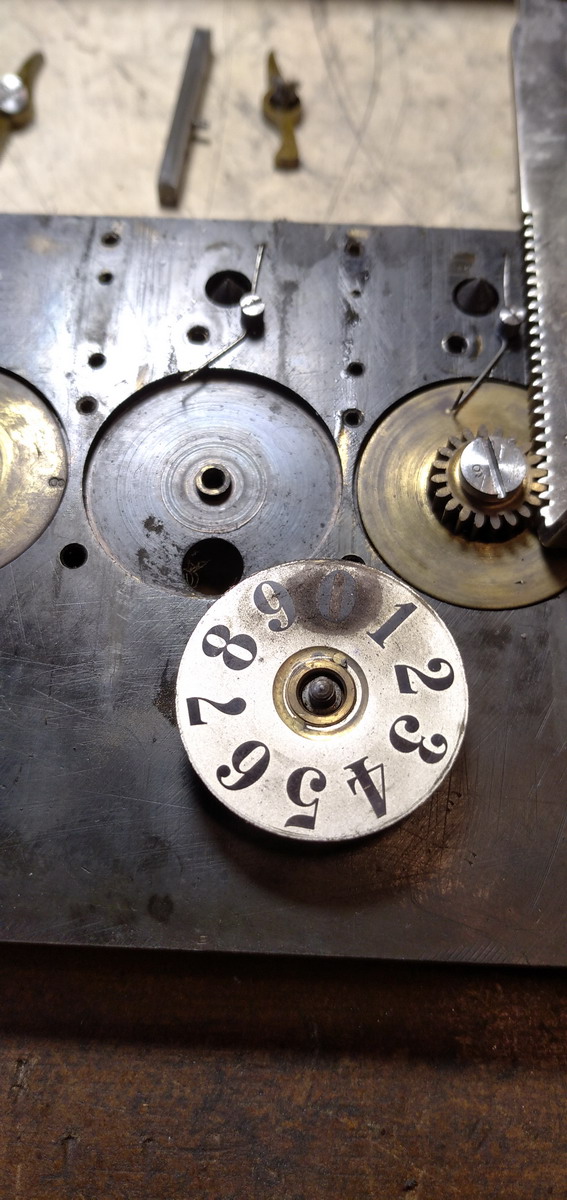
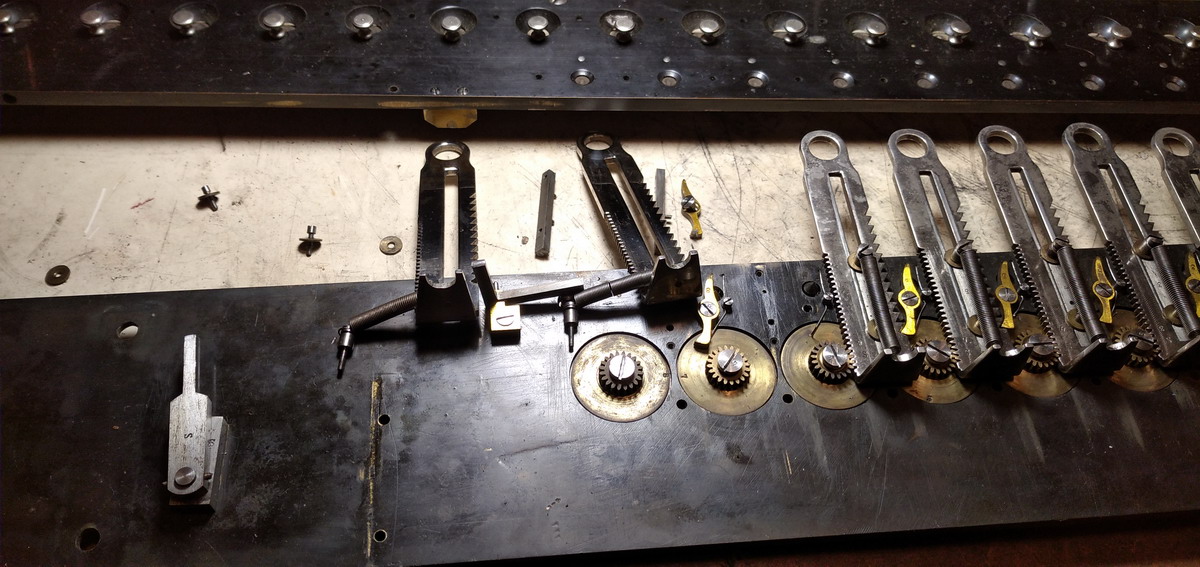
Pinion number 3 had two missing teeth on position 0, but luckily it would still engage enough with the rack to operate without issues - carefully!
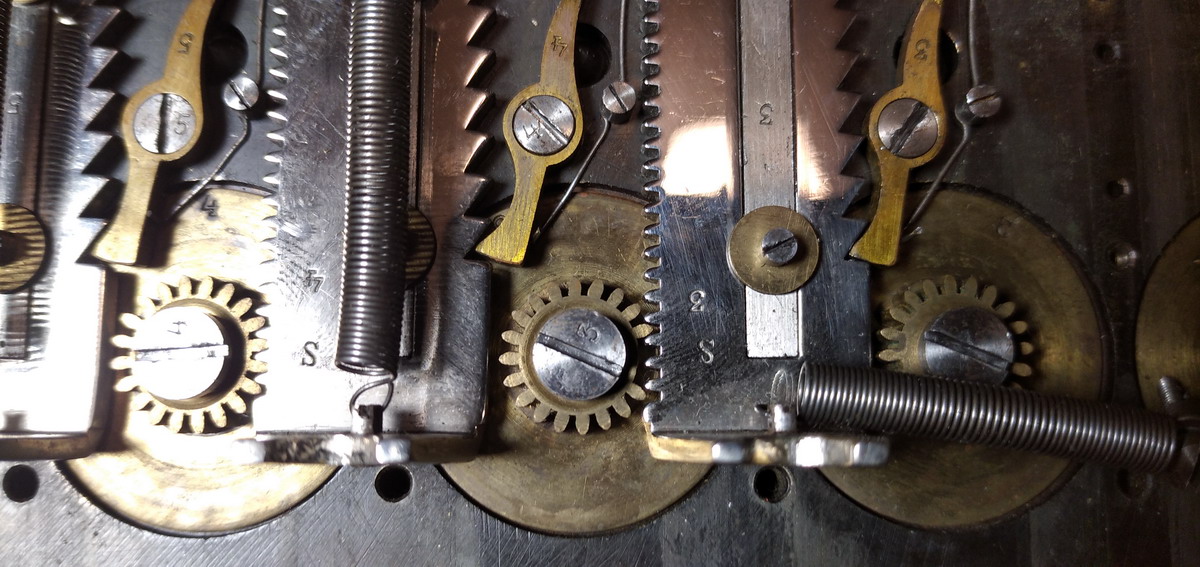
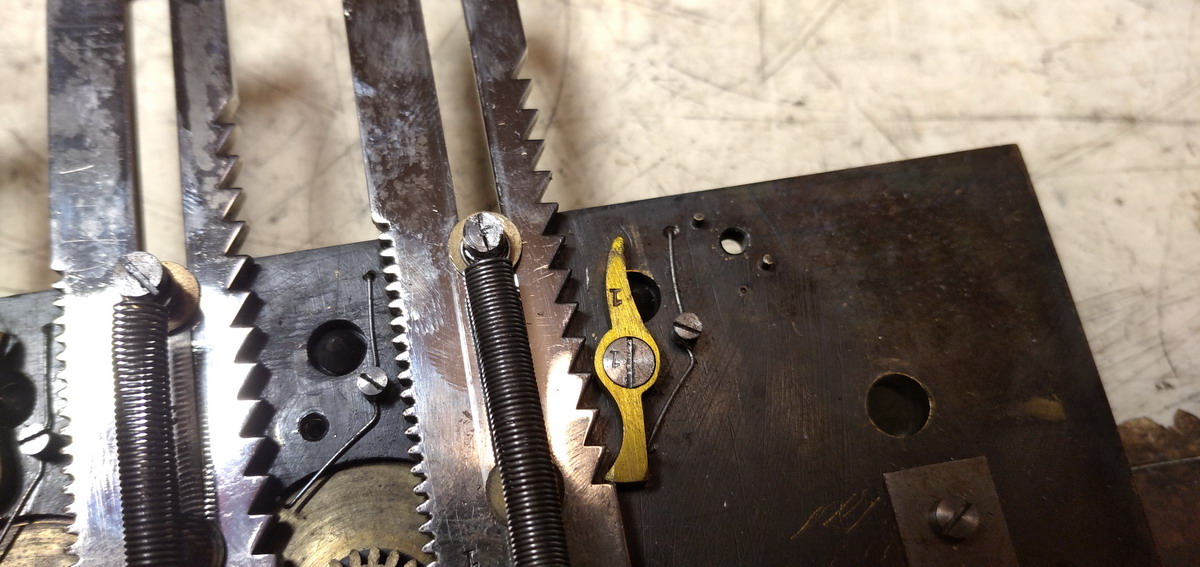
Once everything was clean and reassembled, attention turned to the arithmometer underneath. This was washed out with solvent and lightly oiled.
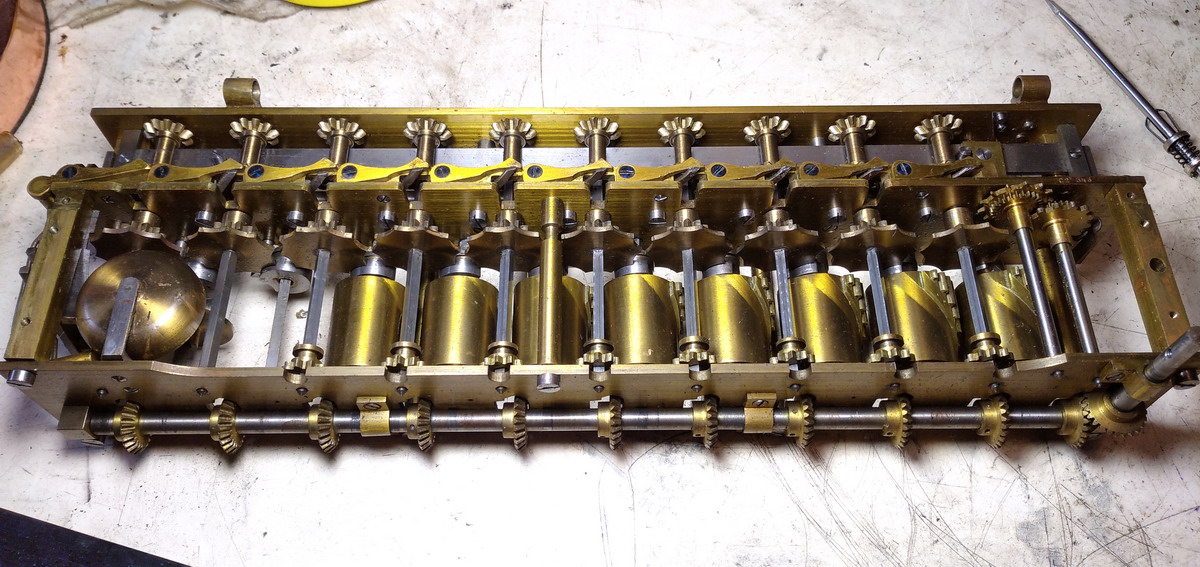
Why they used the pointer for +/- setting when a simple hole in the top plate would suffice to feed the switch lever though, who knows ? Just to be a bit special and different ?
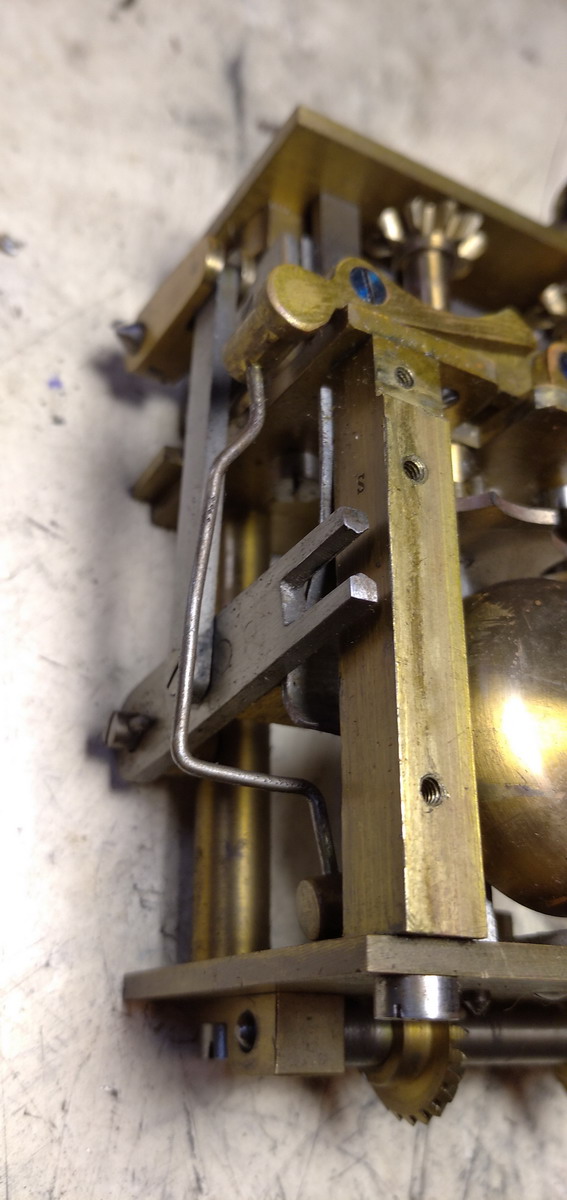
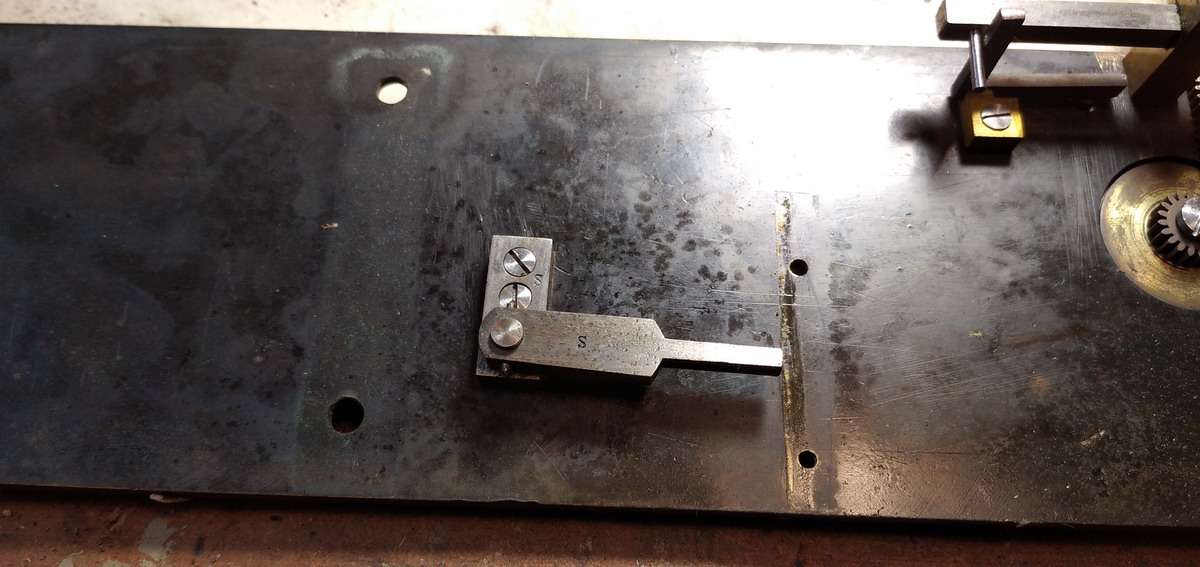
This is the “old” tens’ carry system by Thomas:
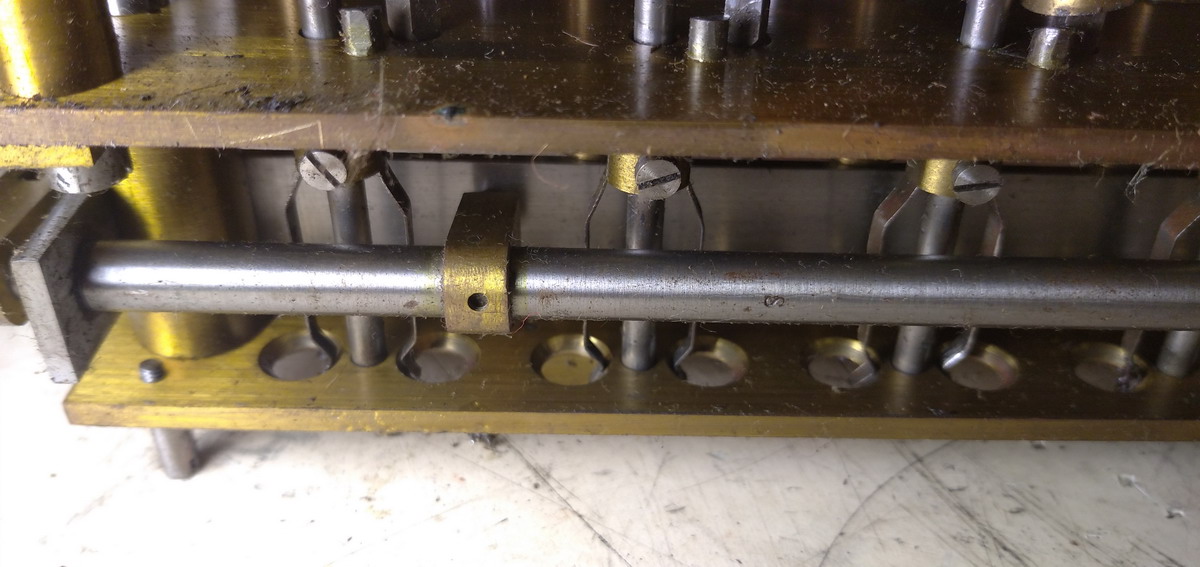
...and nice brass stepped drums:
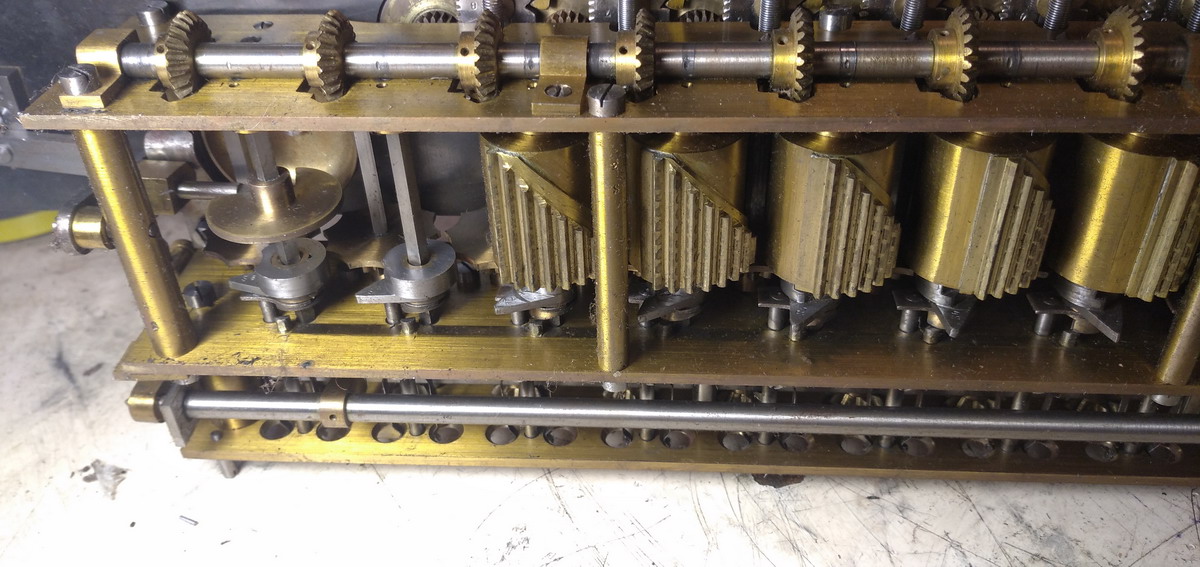
Once the machine was clean, I continued cleaning the carriage.
This is very standard work, and there were few surprises. One “twirler” knob was missing. Some of the indicators appear to have been metallized or painted in white, but the white comes off to reveal the brass disk beneath. Some of the disks appear to have no white at all. Exposure to dust and light also makes the white appearance disappear.
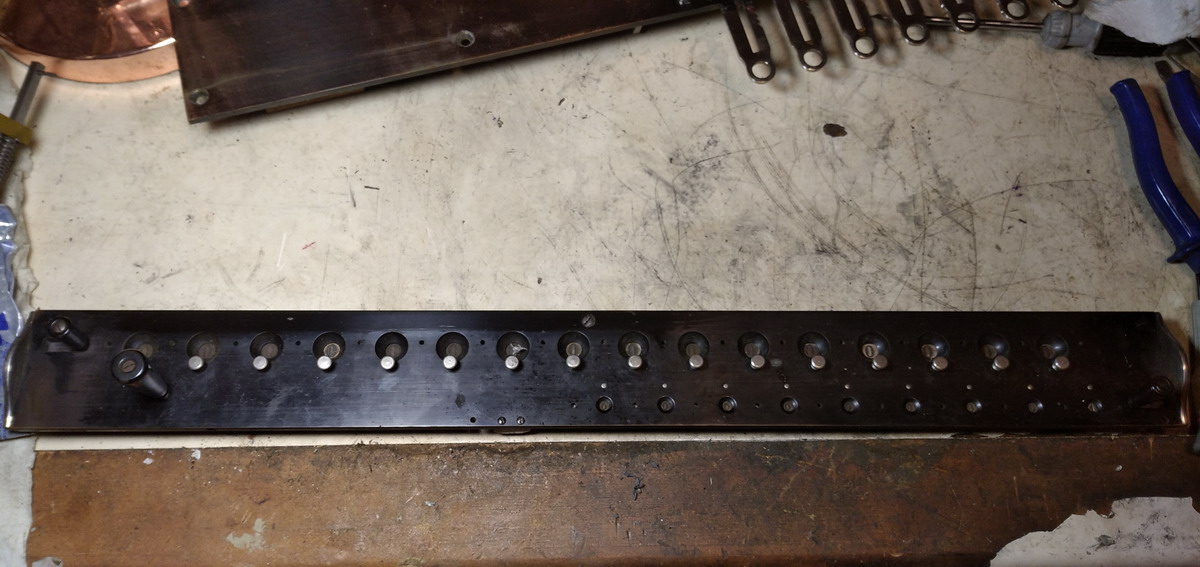
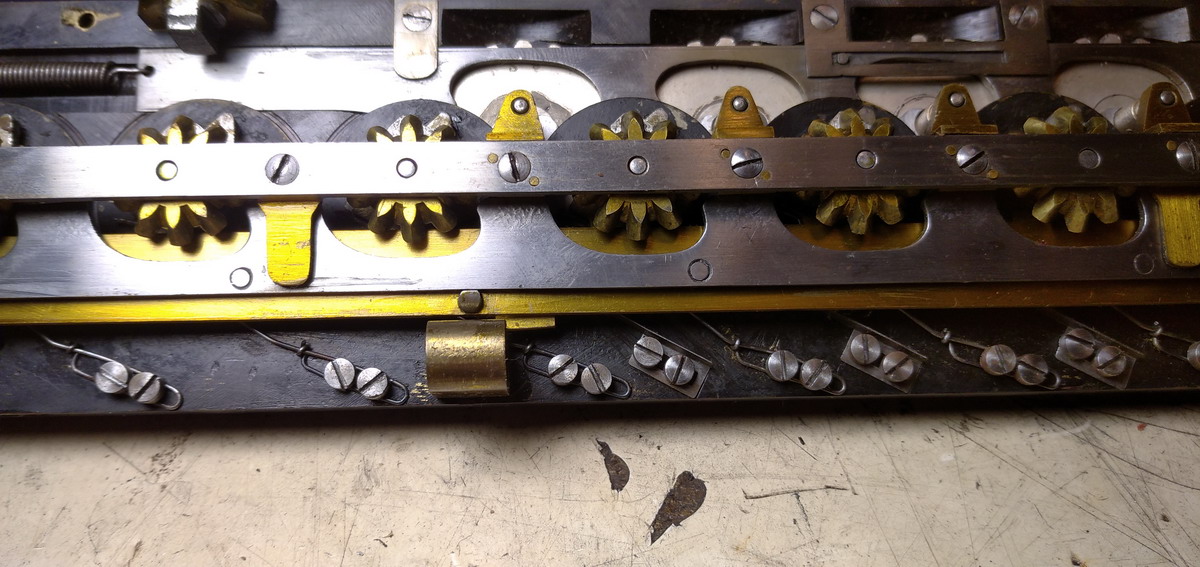
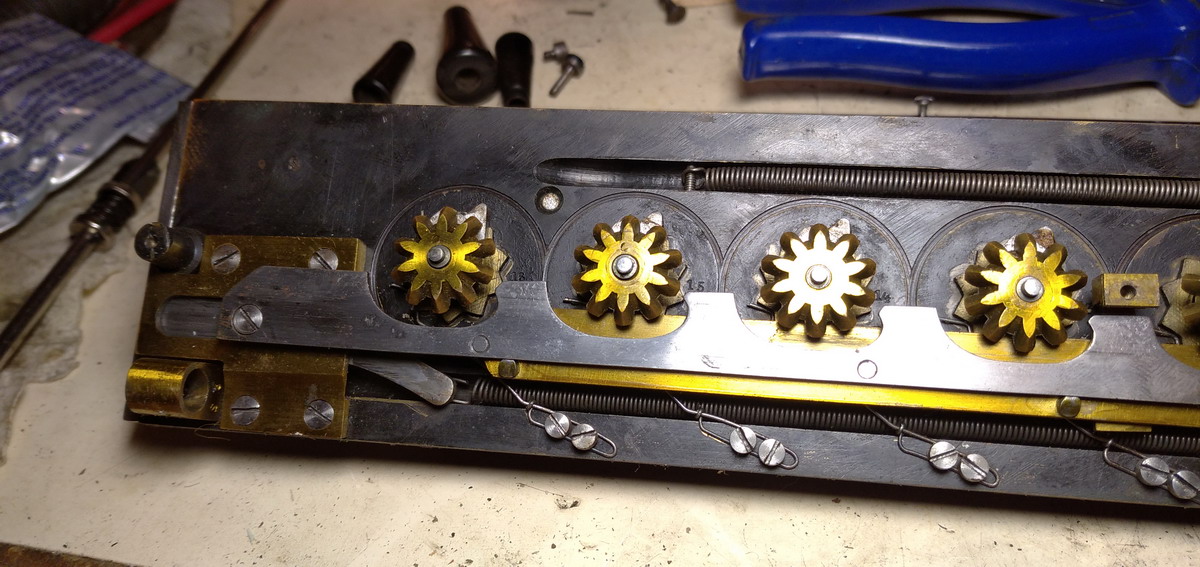
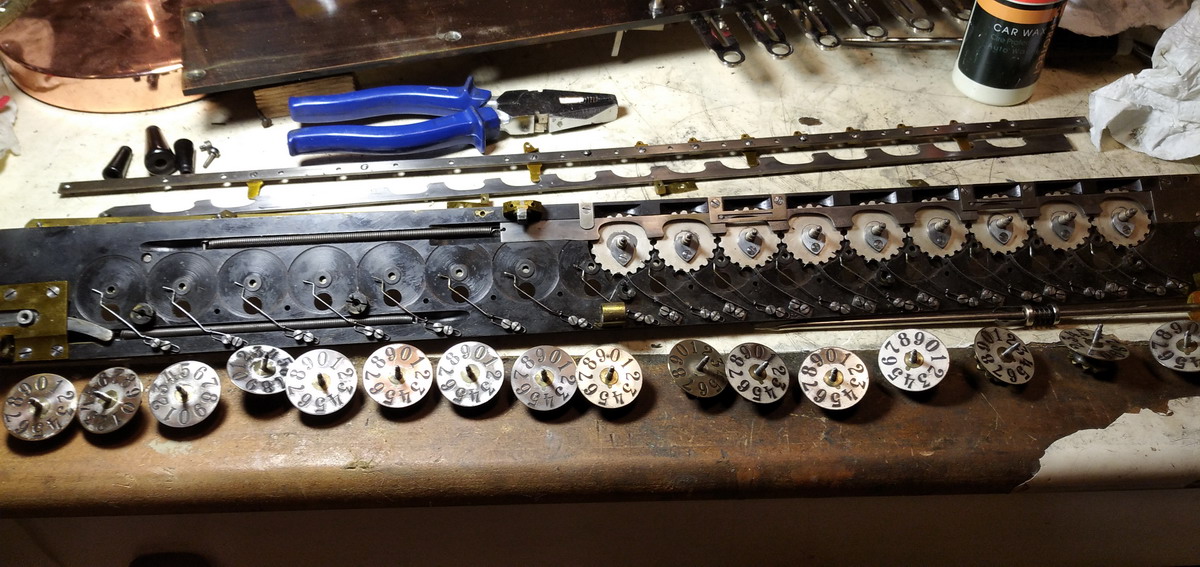
The reset cams are heavily worked on by hand to adjust them to run as freely as possible, both in the counter and the result register.
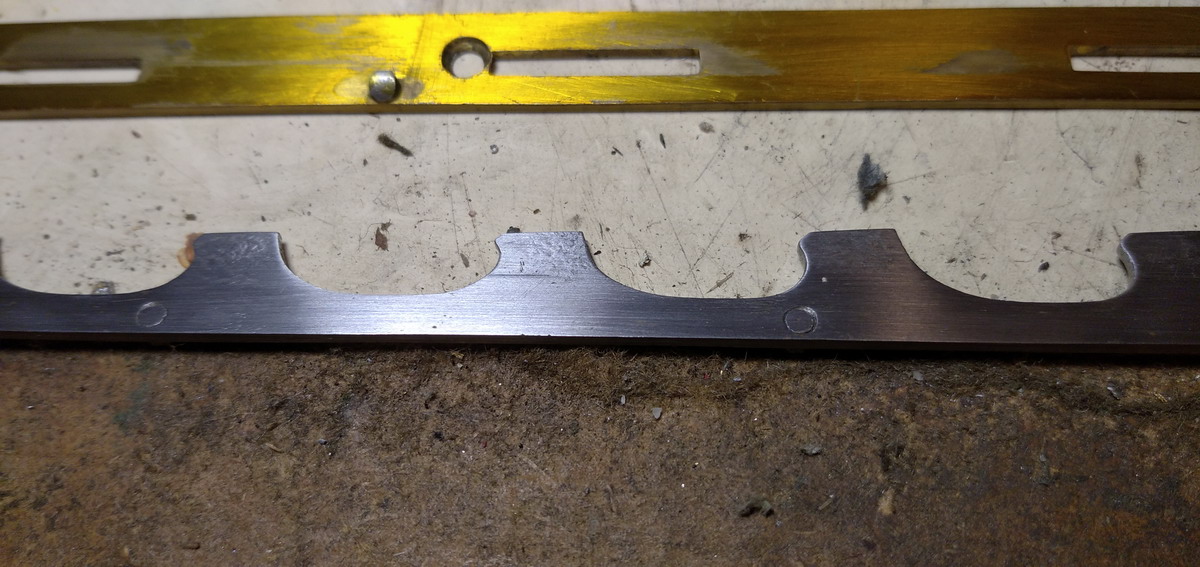
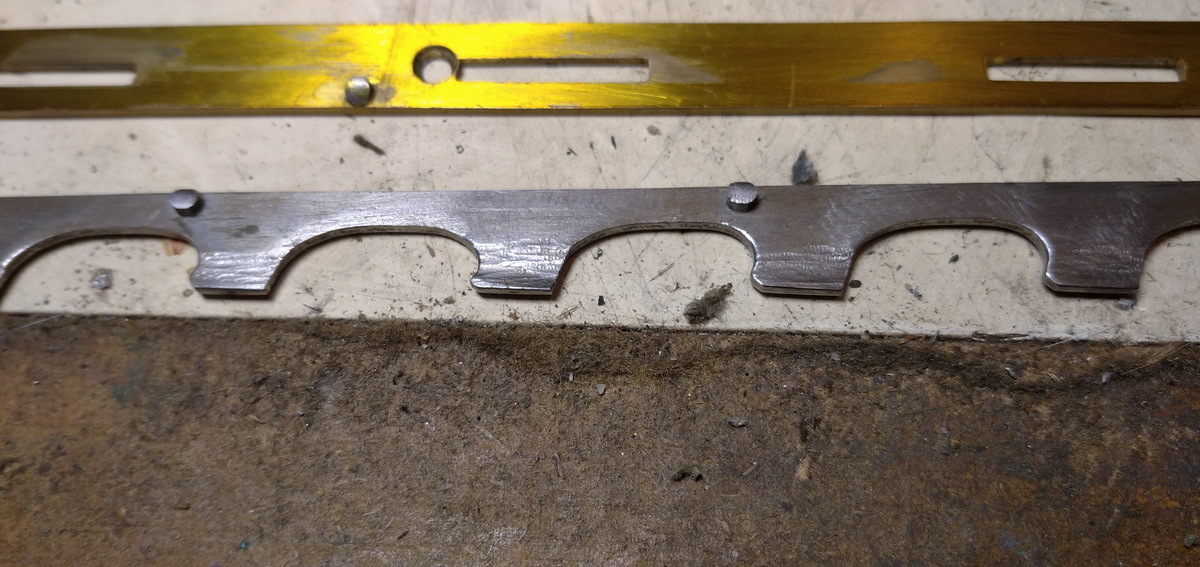
Once everything was clean, reassembly is the reverse of disassembly...
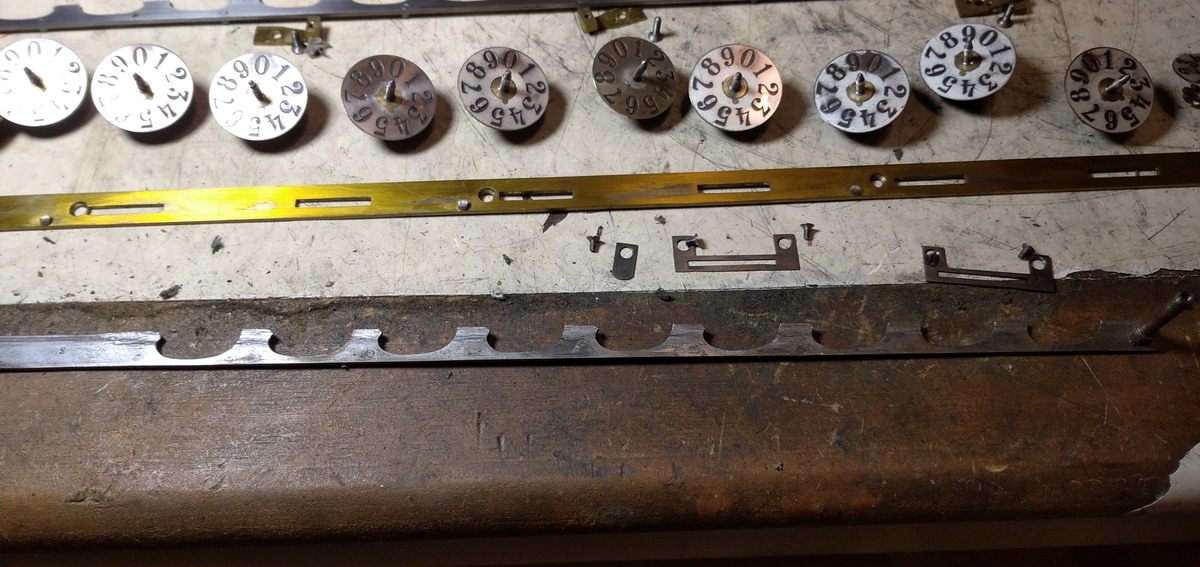
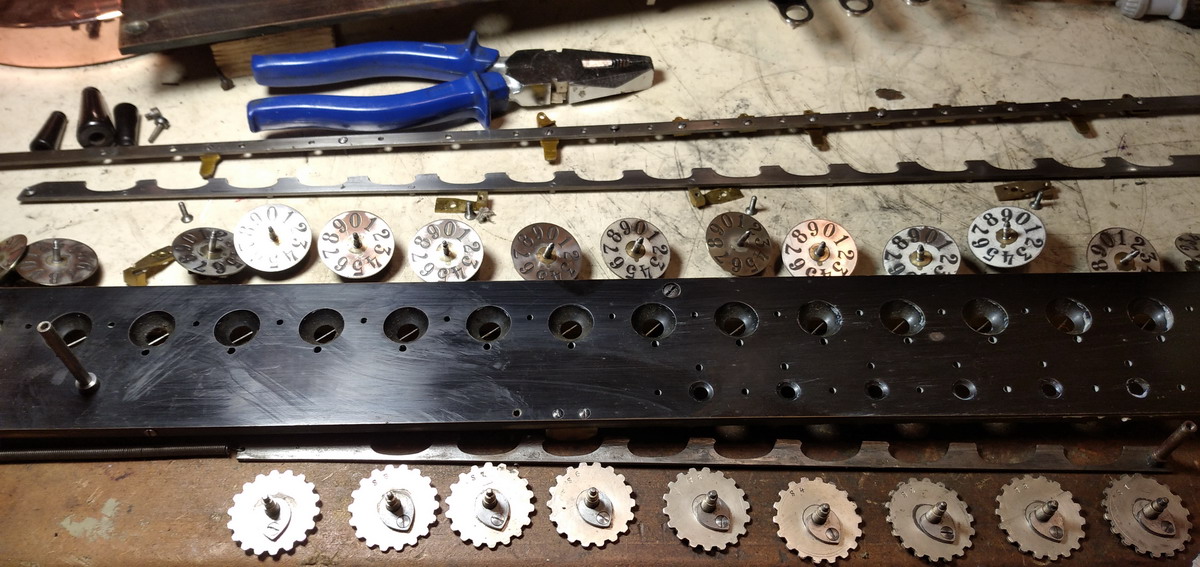
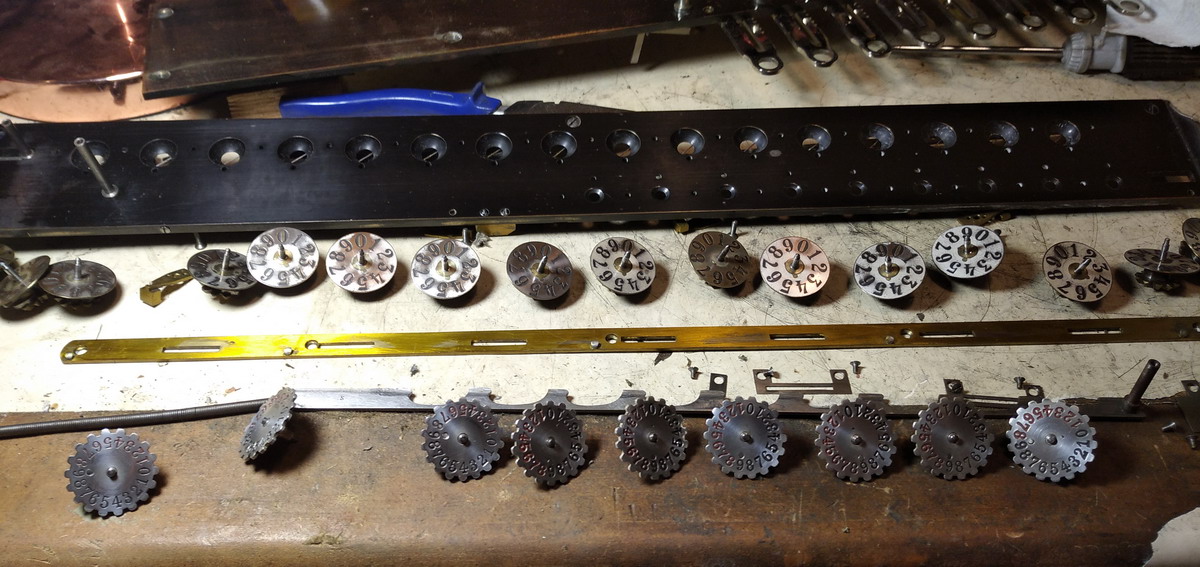
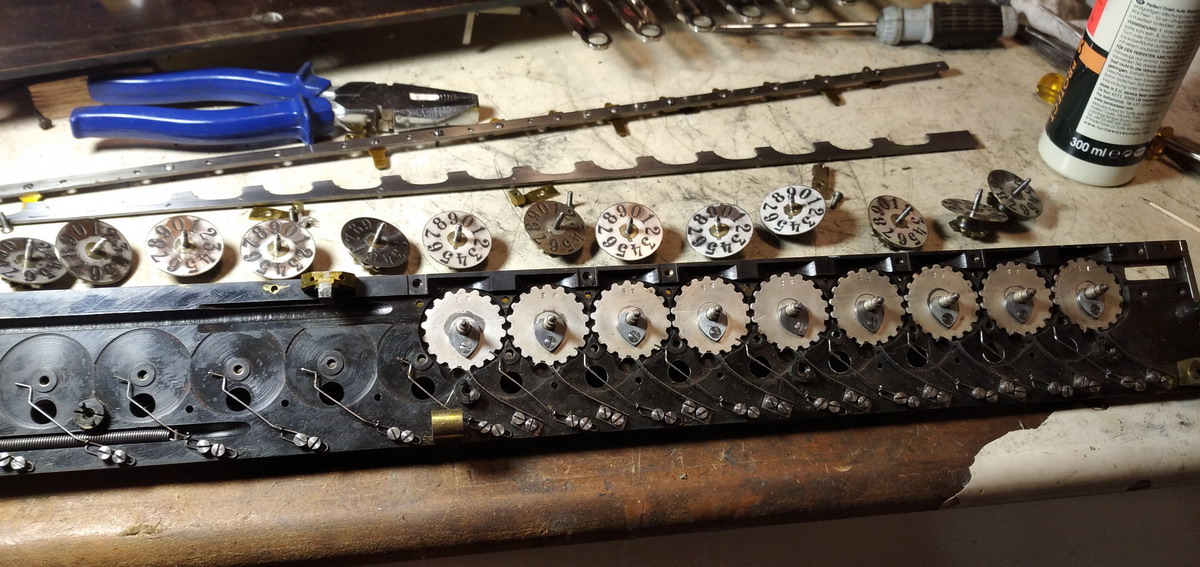
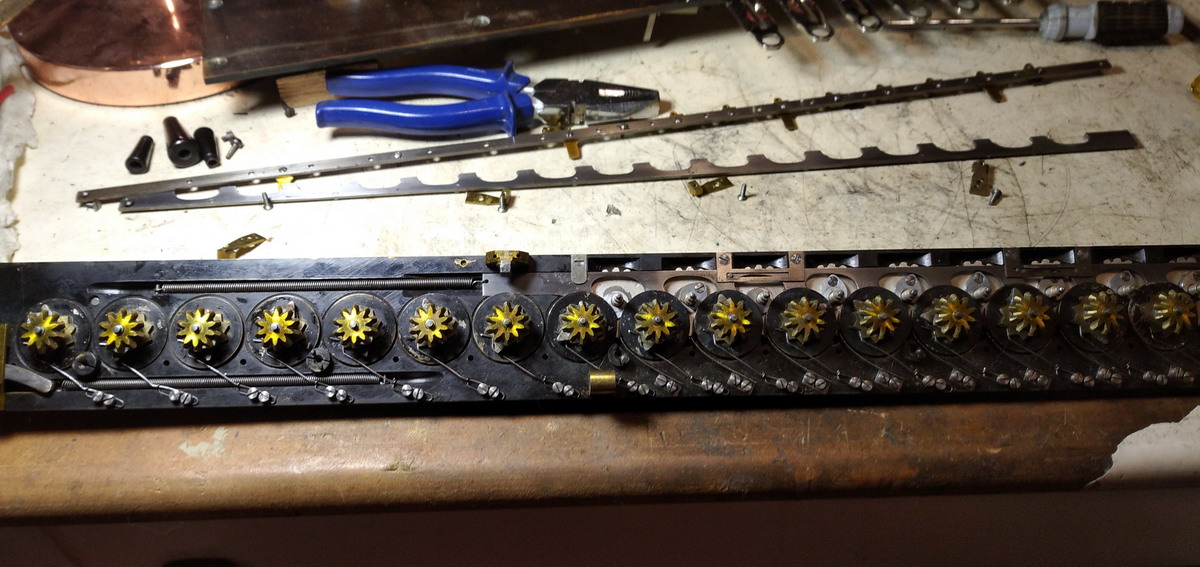
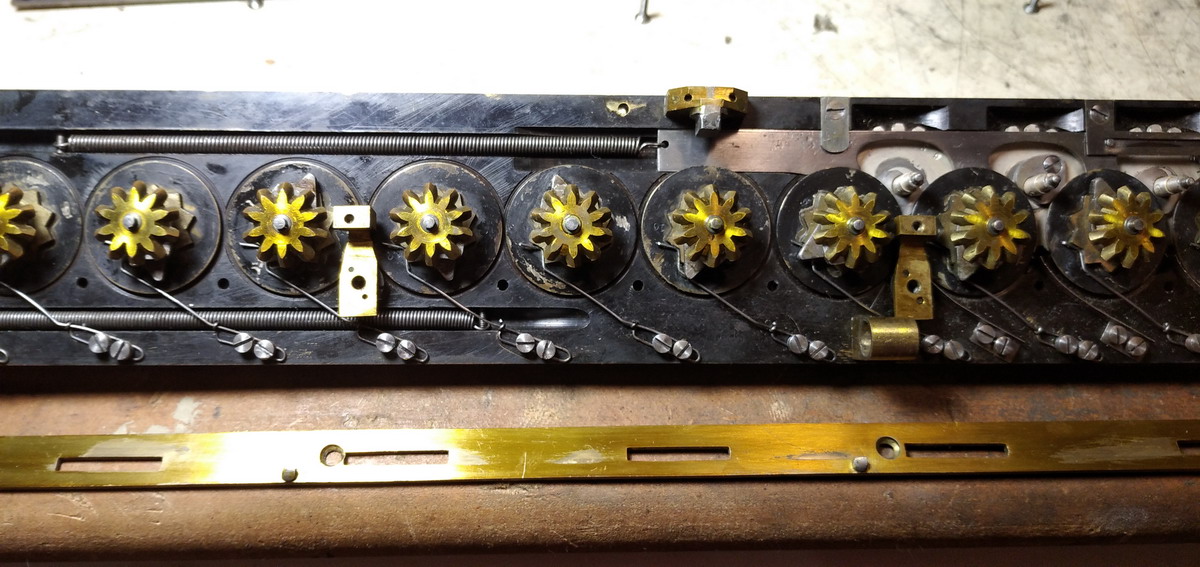
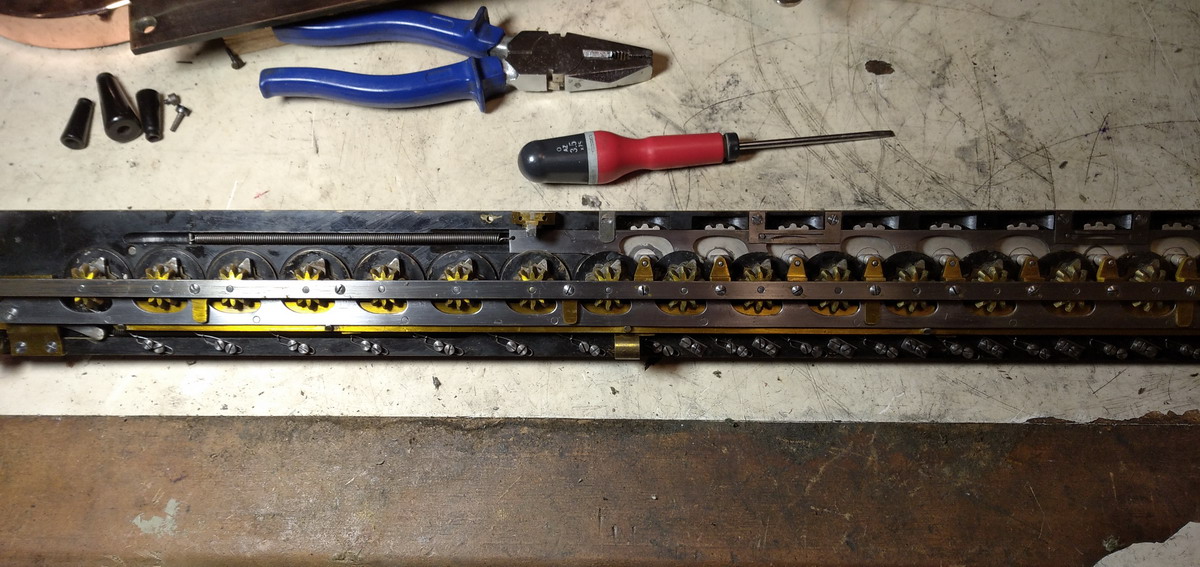
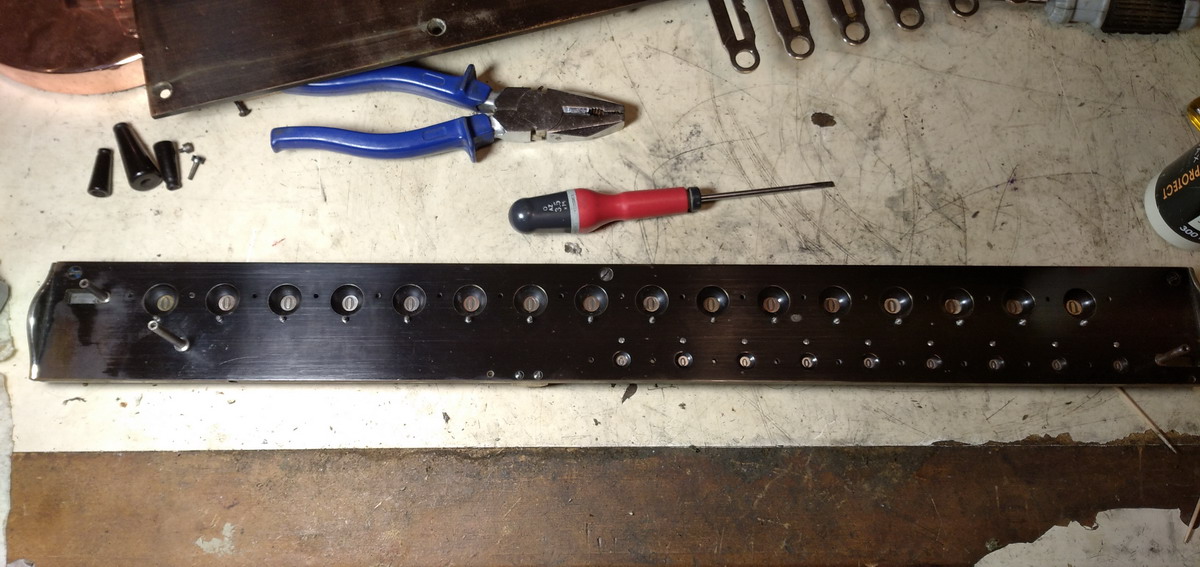
and then it was just a question of reuniting the machine with its top plate and carriage ...
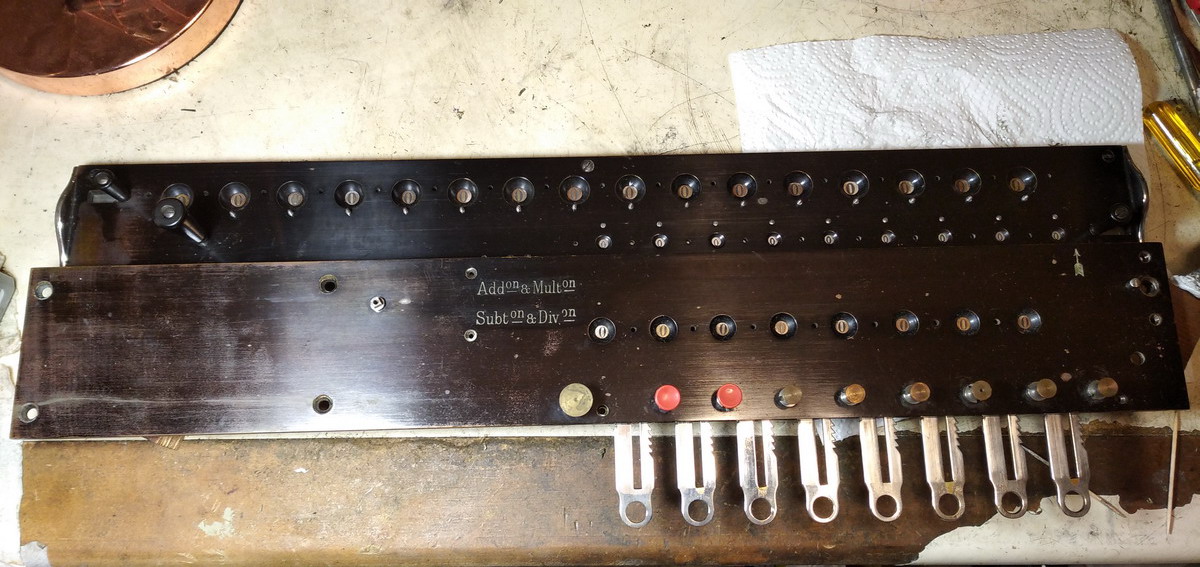
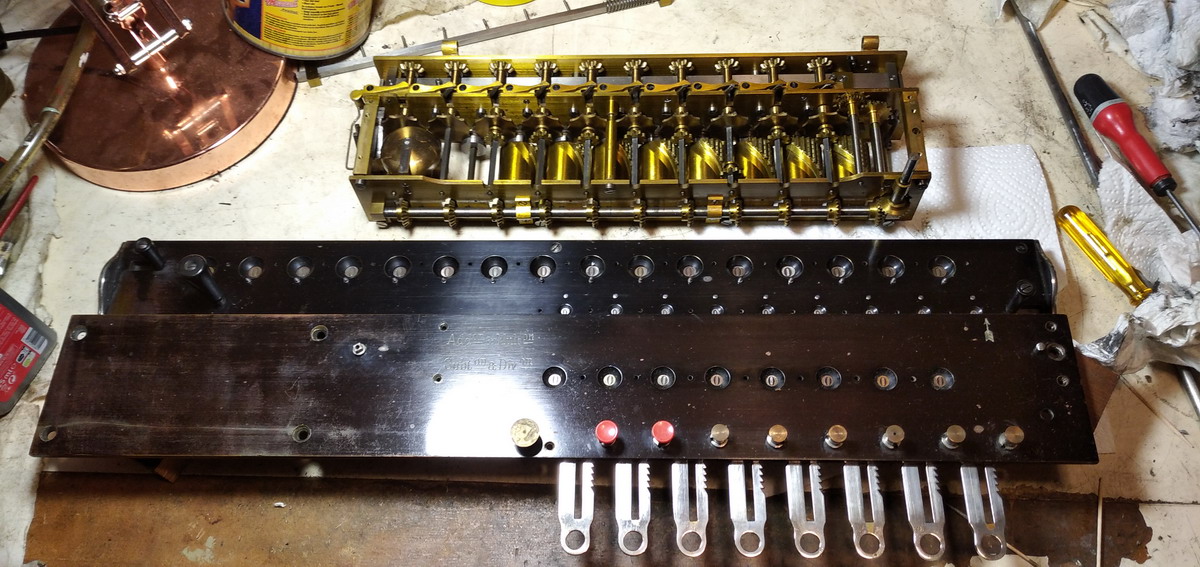
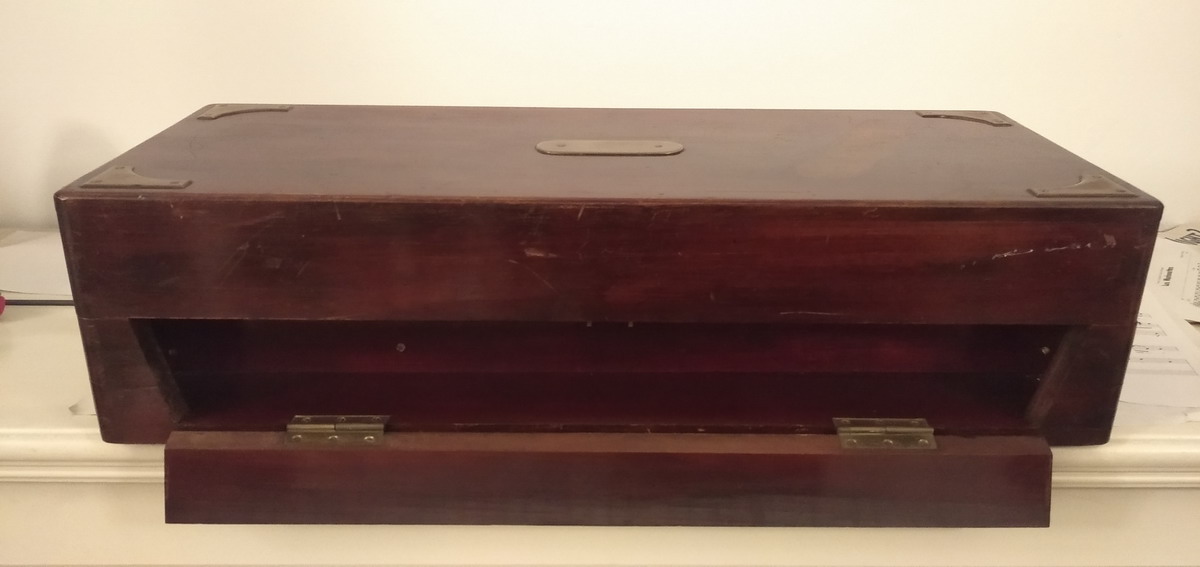
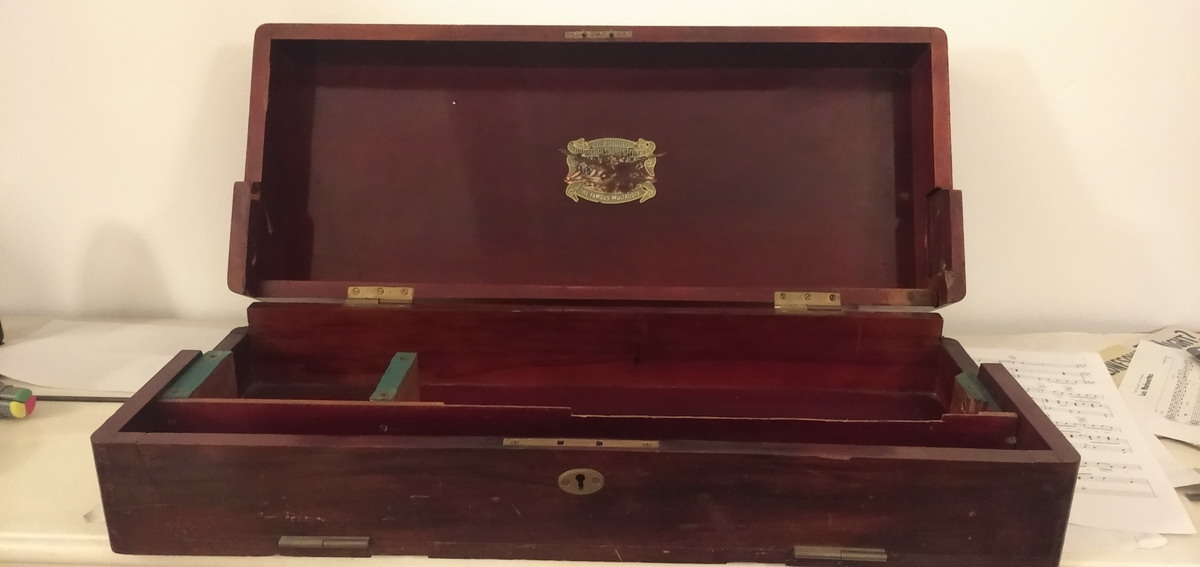
and putting it back in the box!
Two more things needed to be done, the first of which was the casting of new clearing key tops. For this, silicone molds were made of two of the small keytops, and of the large keytop. In order to get the color correct, a whole new set of keytops was cast in bright red, and subsequently glued onto the brass knobs.
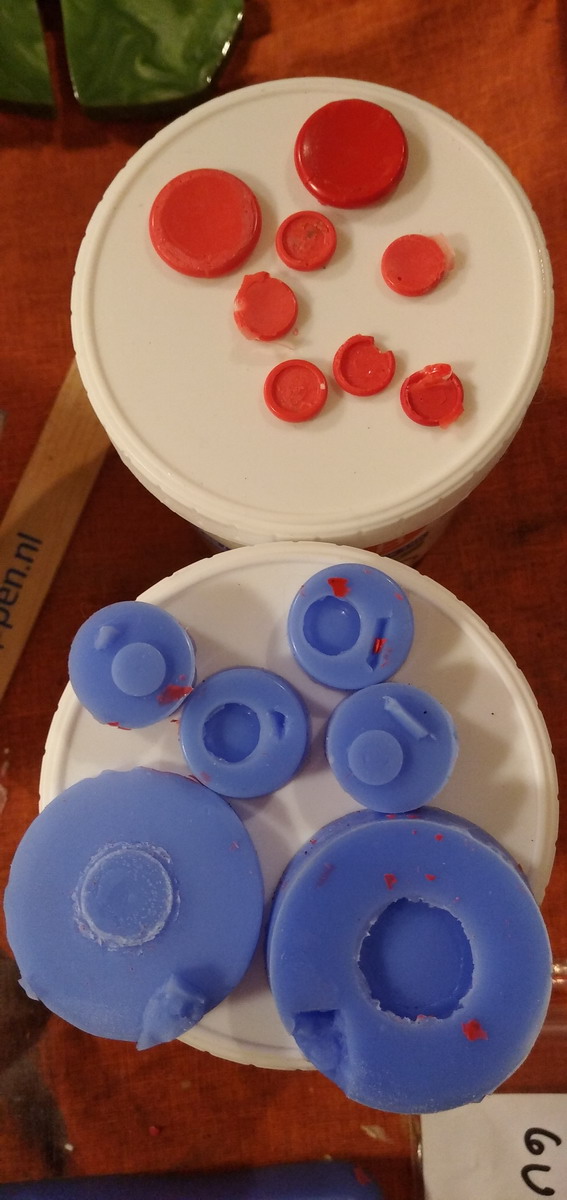
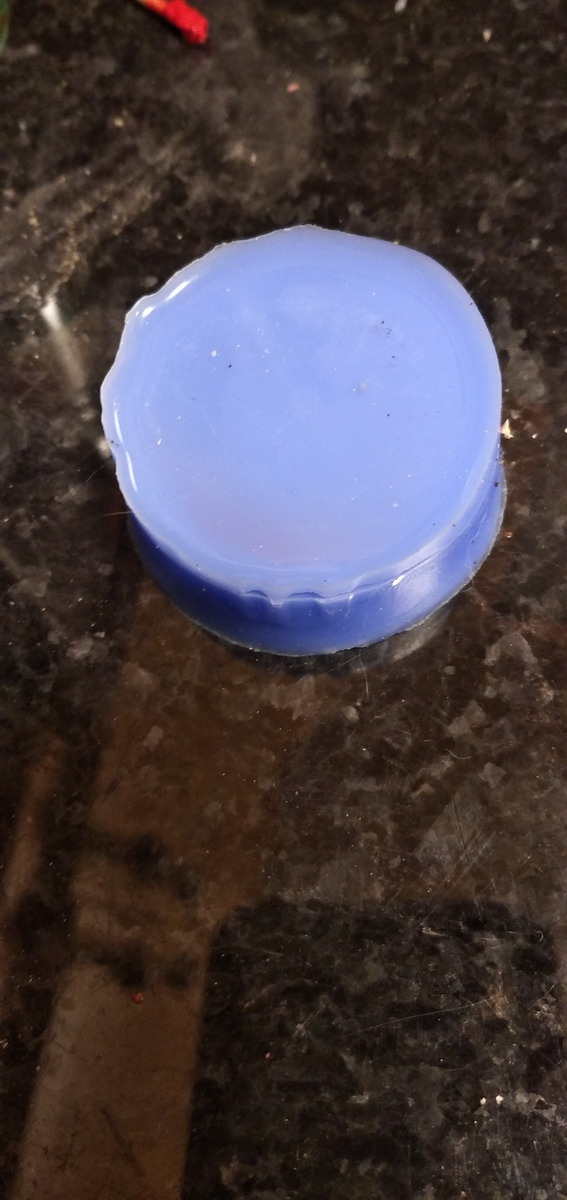
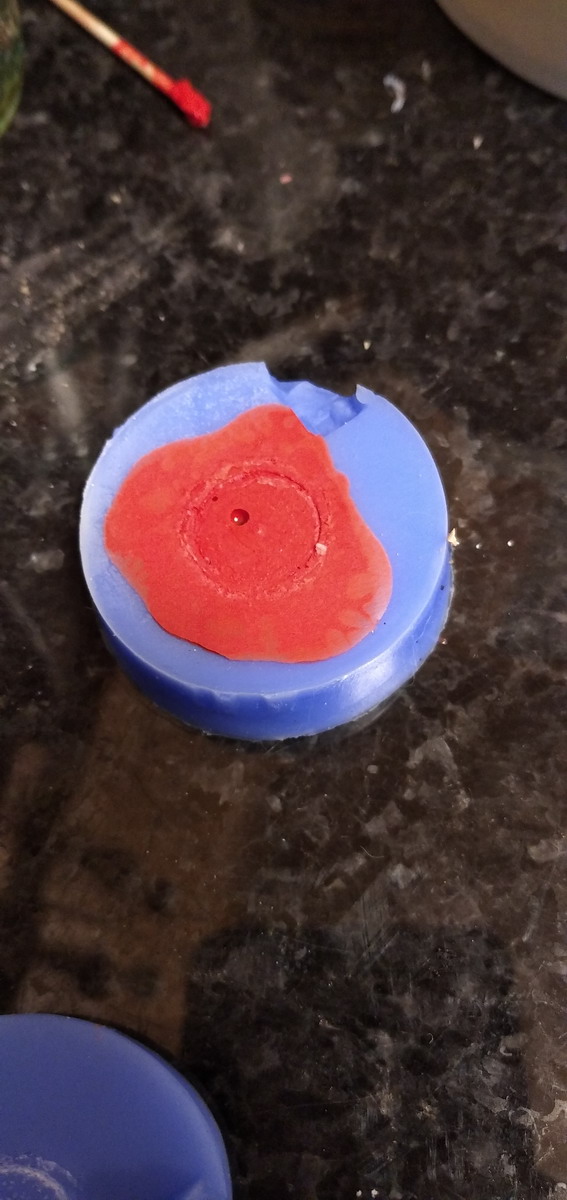
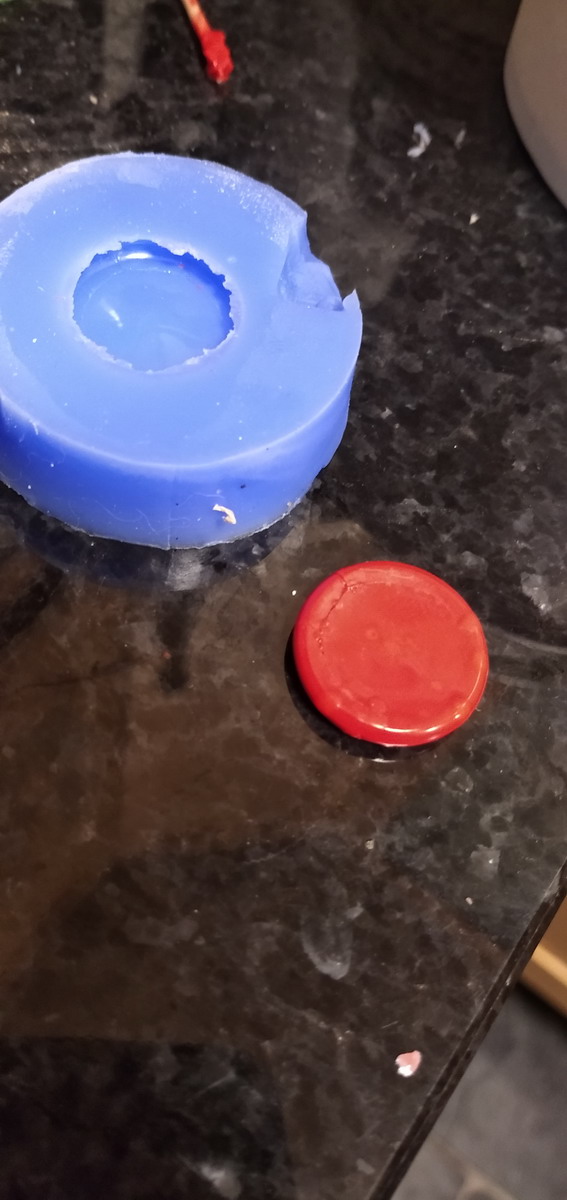
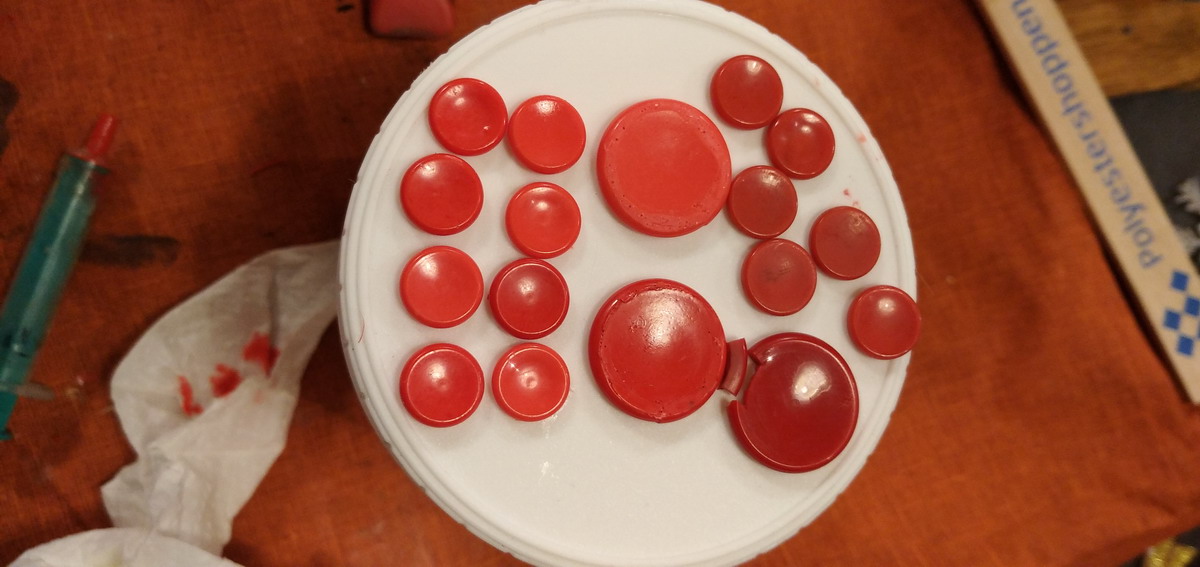
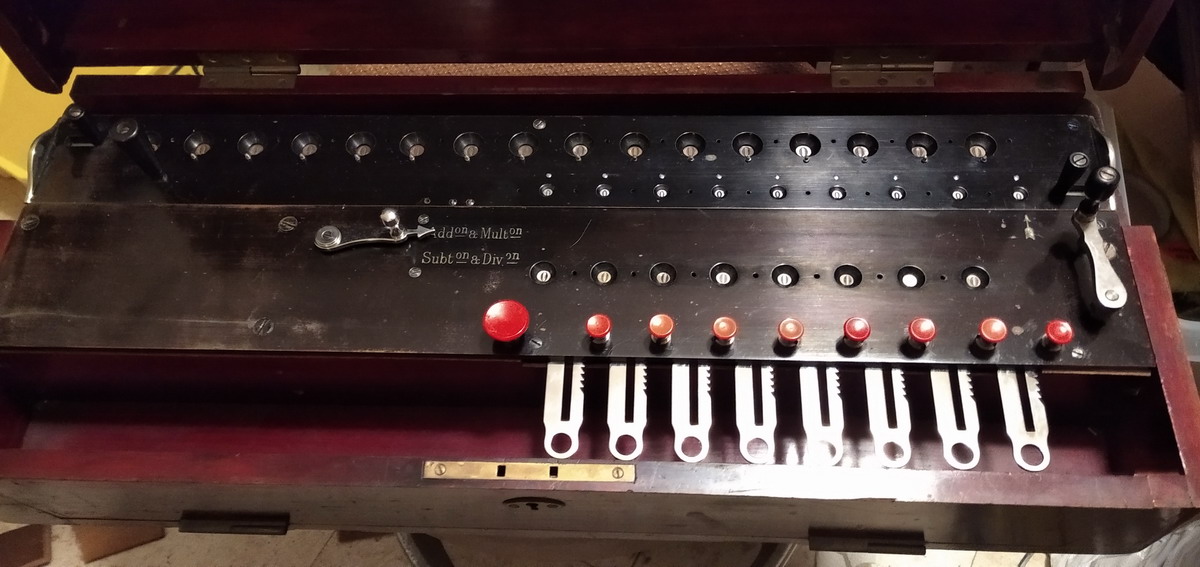
The final thing was turning a new “twirler” knob in brass, because one of them was missing from the machine. See if you can spot it in the pictures below ...
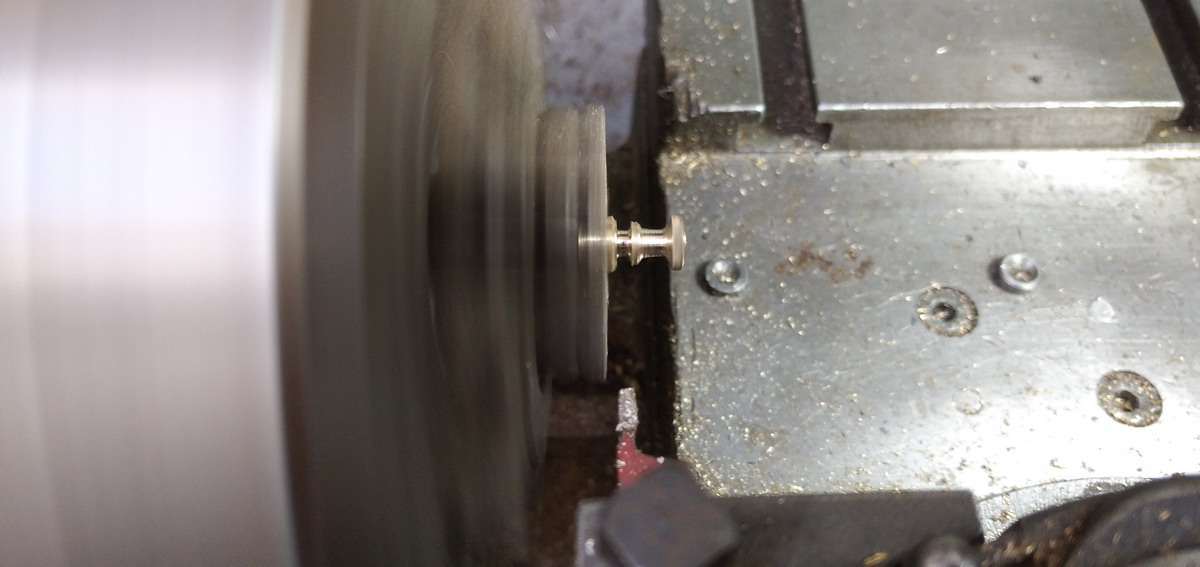
And that meant the machine was finished. Enjoy the pictures!
